Spaced out! 101 astronomy images that will blow your mind
Giant Seahorse?
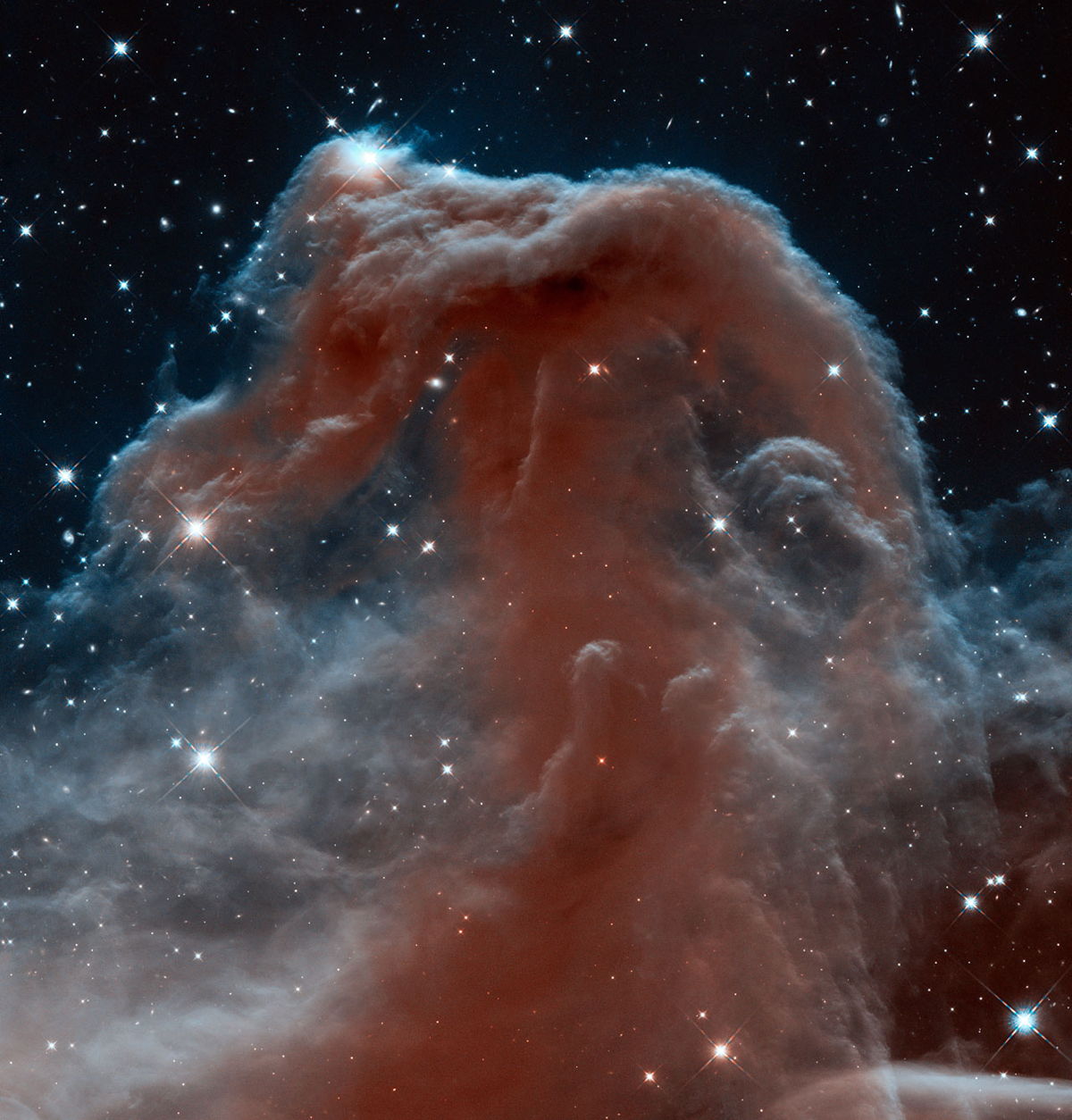
This Hubble image, which was captured and released on April 19, 2013, to celebrate the orbiting telescope’s 23rd year in orbit, reveals part of the sky in the constellation of Orion (The Hunter).
The Hubble observatory, which launched on April 24, 1990, captured the Horsehead Nebula (also known as Barnard 33) rising like a giant seahorse from the turbulent waves of gas and dust in this stunning infrared light image. "The result is a rather ethereal and fragile-looking structure, made of delicate folds of gas — very different to the nebula’s appearance in visible light," mission officials wrote in an image description Friday (April 19).
Colorful Venus
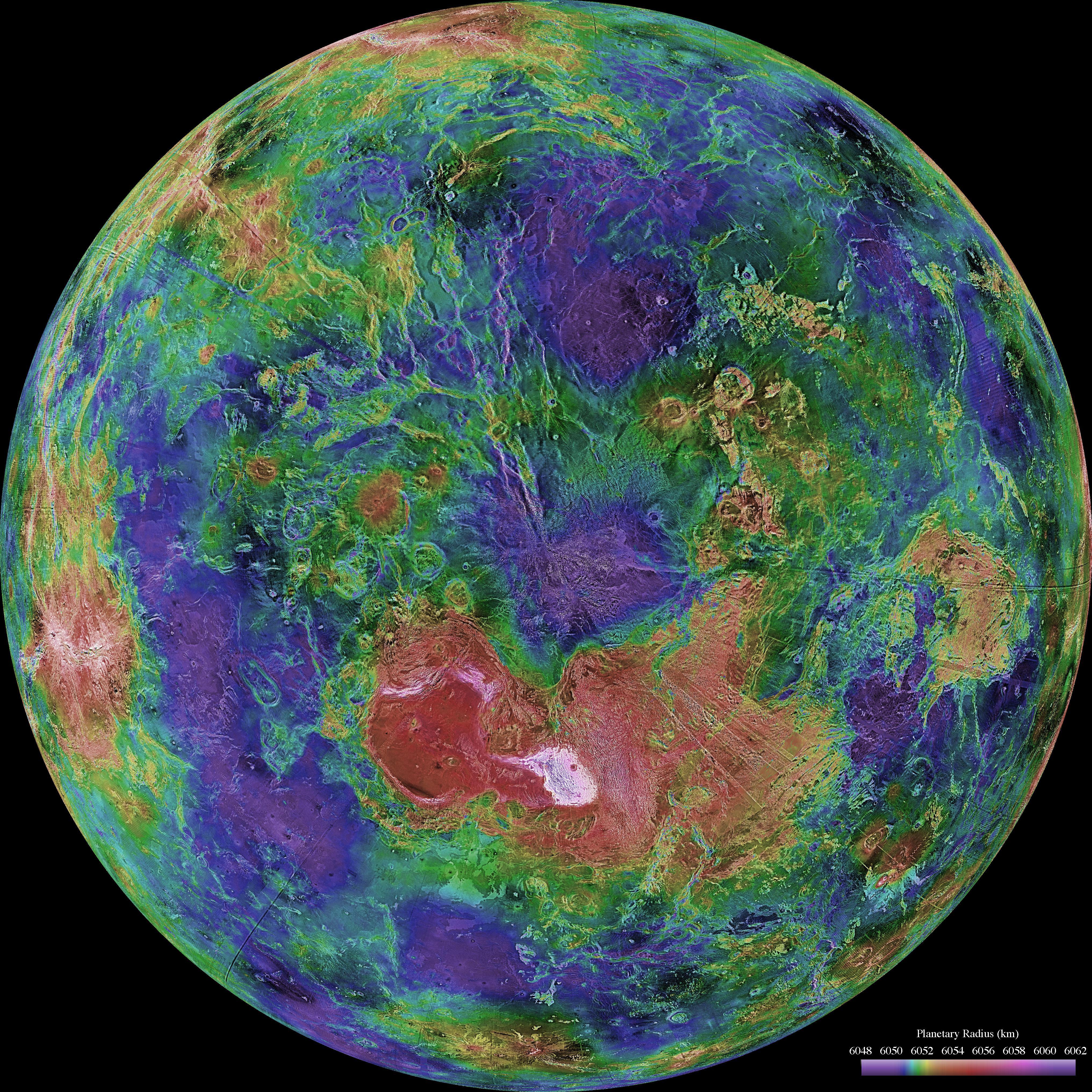
This hemispheric view of Venus was created using more than a decade of radar investigations culminating in the 1990-1994 Magellan mission, and is centered on the planet's North Pole. The Magellan spacecraft imaged more than 98 percent of Venus and a mosaic of the Magellan images forms the image base. Gaps in the Magellan coverage were filled with images from the Earth-based Arecibo radar in a region centered roughly on 0 degree latitude and longitude, and with a neutral tone elsewhere (primarily near the South Pole). This composite image is color-coded to show elevation.
A Cloudy Space Mystery
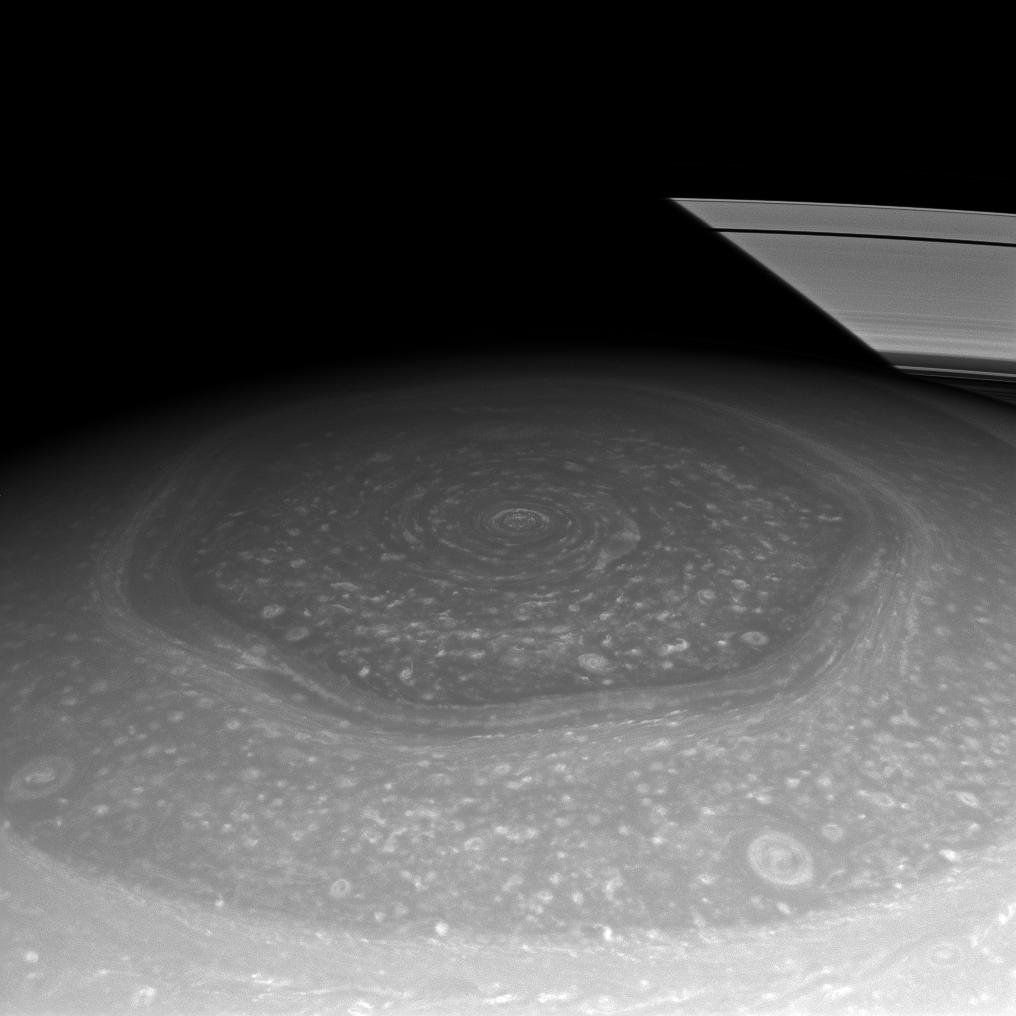
Forget fluffy bunnies or rearing horses. On Saturn, the clouds form in the shape of hexagons.
This hexagonal cloud formation, first discovered in the 1980s by the Voyager spacecraft, was photographed again in 2012 by the Cassini spacecraft. The formation sits at Saturn's north pole; it's visible here in the foreground with a portion of Saturn's rings looping around in the upper right-hand corner of the image. No one knows why clouds form in this geometrical pattern in this region of Saturn.
Galactic Easter Egg
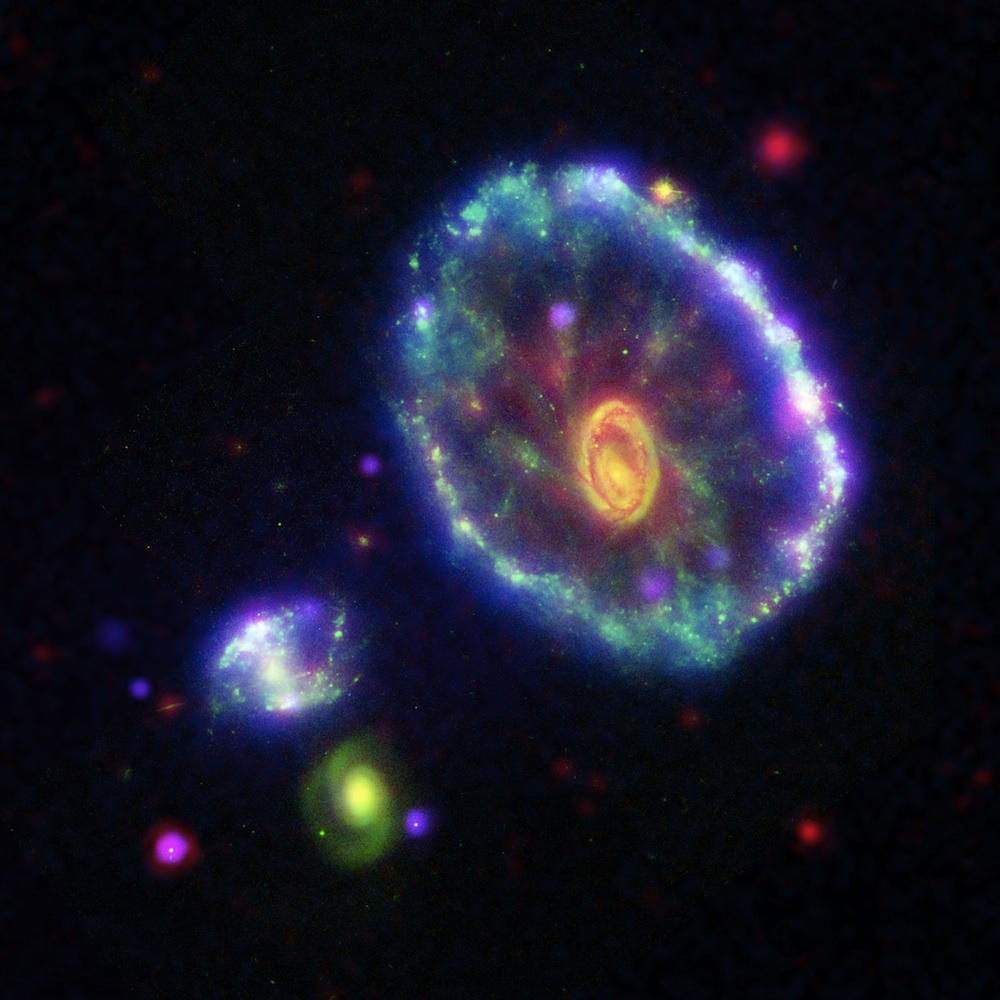
With colors that would make Faberge green with envy, the Cartwheel galaxy stands out against a backdrop of other brightly-colored galactic bodies. The Easter egg appearance of this galaxy is due to false colors representing various wavelengths of light — ultraviolet in blue, B-band visible light in green, infrared in red and x-ray radiation in purple.
The 'rings' of this galaxy are the aftermath of a collision between the Cartwheel galaxy and another galaxy about 100 million years ago. The first ripple is the blue outer ring, while the yellow-orange "yolk" of the Easter egg is a combination of visible and infrared light from the second ripple. The neon blob and green spiral in the background are two other galaxies, one of which may have been the one that collided with Cartwheel
View From Another World
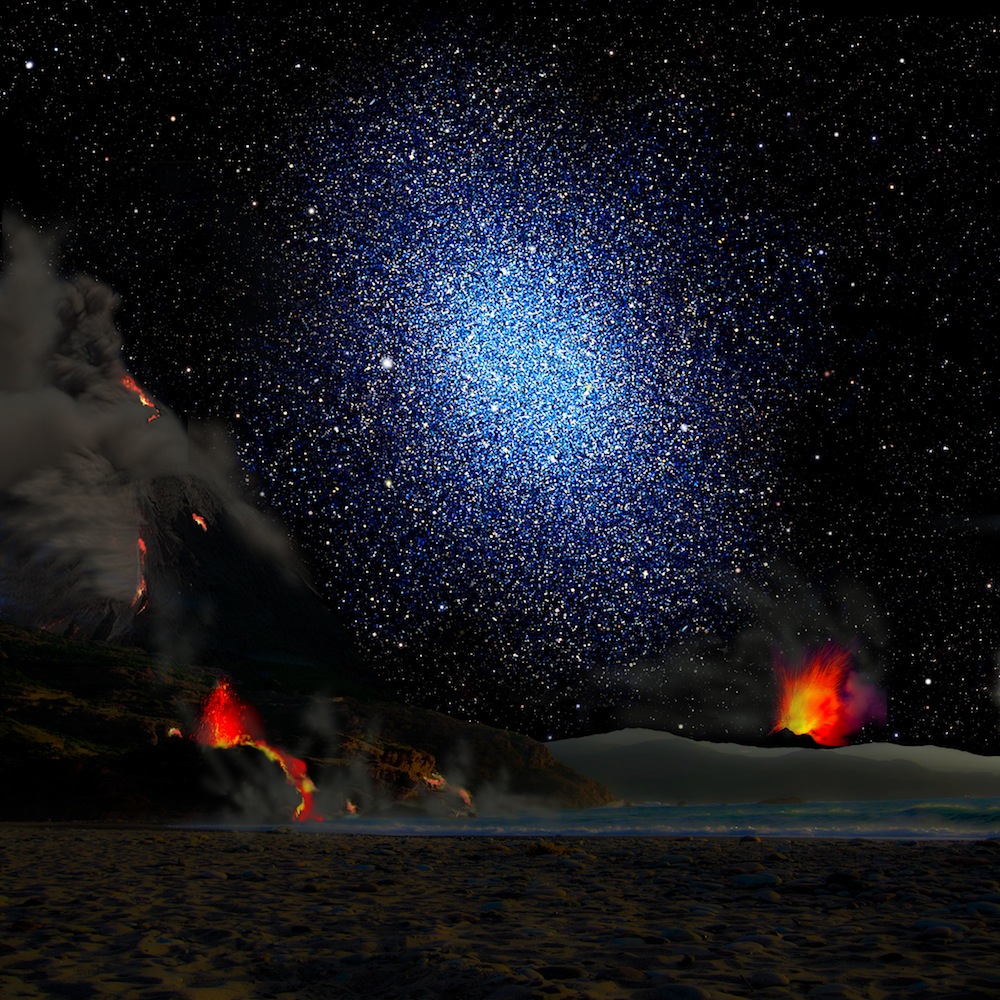
What might the night sky look like from an exoplanet? No one knows for sure, but this science-informed artist's conception is a good starting point for the imagination. The cluster of stars is a dwarf galaxy, which are galaxies composed of up to 99 percent dark matter and only 1 percent normal matter such as stars. Dark matter is a mysterious, invisible substance, detectable only through its gravitational pull.
A recent Harvard-Smithsonian Center for Astrophysics study finds that dark matter is distributed smoothly throughout dwarf galaxies, contradicting scientists' expectations that the dark matter would be clustered at the center of these galaxies like a pit in a peach. These findings suggest that scientists are missing something in their understanding of dark matter's mysteries.
Feeding the Beast
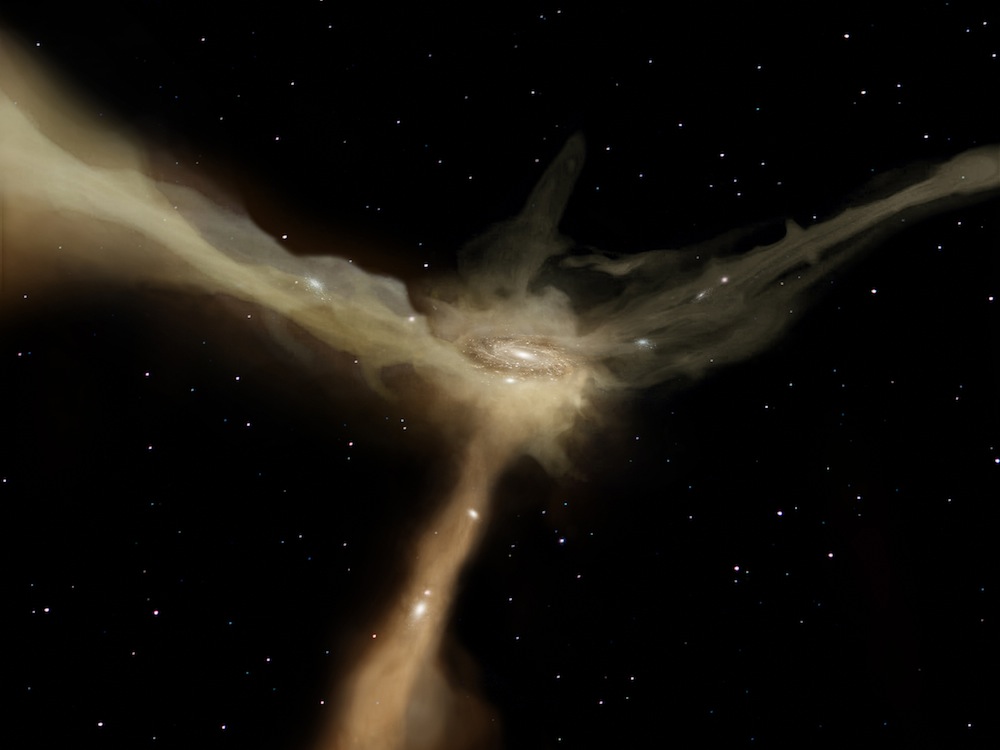
Streams of cold gas feed a forming galaxy in this artist's visualization. The "arms" of gas bring in the raw material to feed star formation in the new galaxy.
No one has ever seen this process in real life; rather, this version of galaxy formation is a theoretical scenario based on numerical simulations.
Scars on Mars
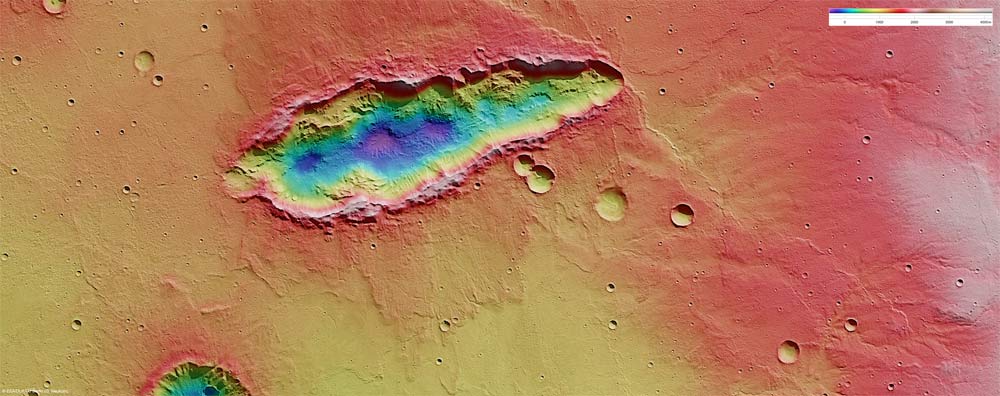
European Space Agency's (ESA) Mars Express recently returned new images of an elongated impact crater in the southern hemisphere of Mars. Located just south of the Huygens basin, it could have been carved out by a train of projectiles striking the planet at a shallow angle, researchers say. The unnamed depressed is about 48 miles (78 kilometers) in length and reaches a depth of 1.2 miles (2 km). Here, purple indicates the lowest lying regions and gray the highest (scale in meters).
Get the world’s most fascinating discoveries delivered straight to your inbox.
Impact craters are generally round, because the projectiles that create them push into the ground before the shockwave of the impact can explode outwards. As for why this crater is elongated, the researchers found the answer in the surrounding blanket of material (called the ejecta blanket). This ejecta blanket is shaped like a butterfly's wings, with two distinct lobes, suggesting that two projectiles, possibly halves of a once-intact body, slammed into the surface here.
Merging Galaxies Form Cosmic Exclamation Point

VV 340, also known as Arp 302, provides a textbook example of colliding galaxies seen in the early stages of their interaction. The edge-on galaxy near the top of the image is VV 340 North and the face-on galaxy at the bottom of the image is VV 340 South. Millions of years later these two spirals will merge -- much like the Milky Way and Andromeda will likely do billions of years from now. Data from NASA's Chandra X-ray Observatory (purple) are shown here along with optical data from the Hubble Space Telescope (red, green, blue). VV 340 is located about 450 million light years from Earth.
far side of the moon
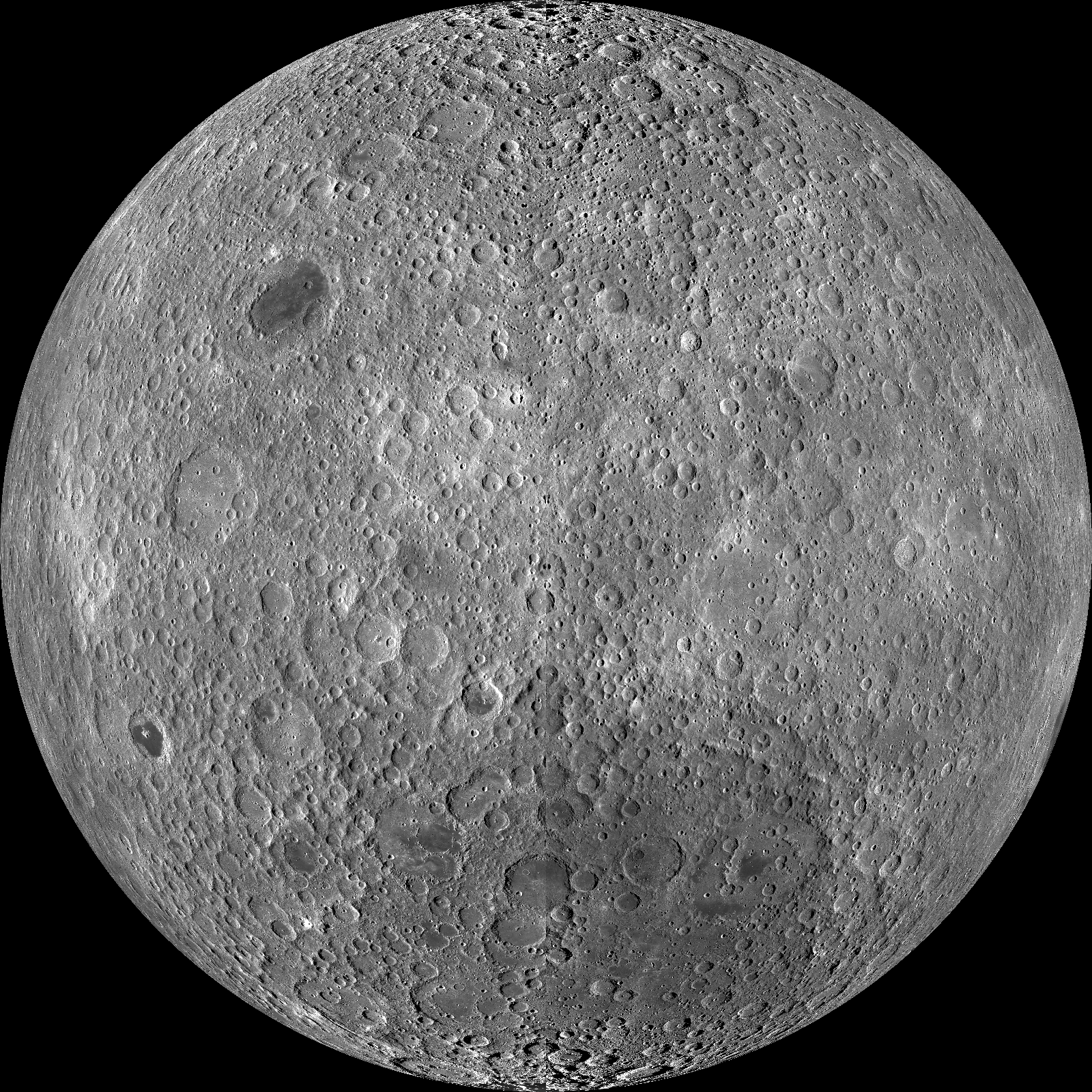
Mosaic of photos taken of the far side of the moon by the Lunar Reconnaissance Orbiter, orbiting at an altitude of just 30 miles (50 km).
Galactic Thread
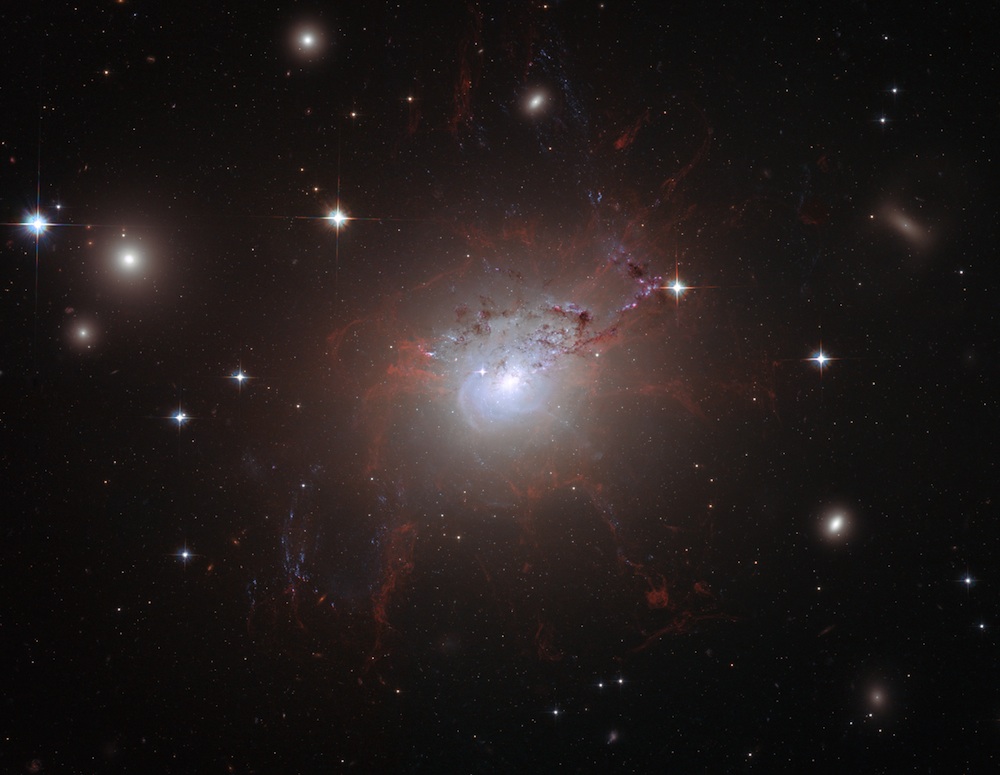
This Hubble Space Telescope image shows NGC 1275, the galaxy located in the center of the Perseus Galaxy Cluster. The red threadlike filaments are composed of cool gas suspended by a magnetic field.
Martian Valley Captured by Viking

The largest canyon in the solar system, called Valles Marineris, cuts a wide swath across the face of Mars. The grand valley extends over 1,864 miles (3,000 kilometers long), up to 373 miles (600 km) across, and as much as (8 km) deep. By comparison, Earth's Grand Canyon is 500 miles (800 km) long, 19 miles (30 km) across, and 1.1 miles (1.8 km) deep. The origin of the Valles Marineris remains unknown, although a leading hypothesis holds that it started as a crack billions of years ago as the planet cooled. Several geologic processes have been identified in the canyon. The above mosaic was created from over 100 images of Mars taken by Viking Orbiters in the 1970s.
Technicolor Volcanoes
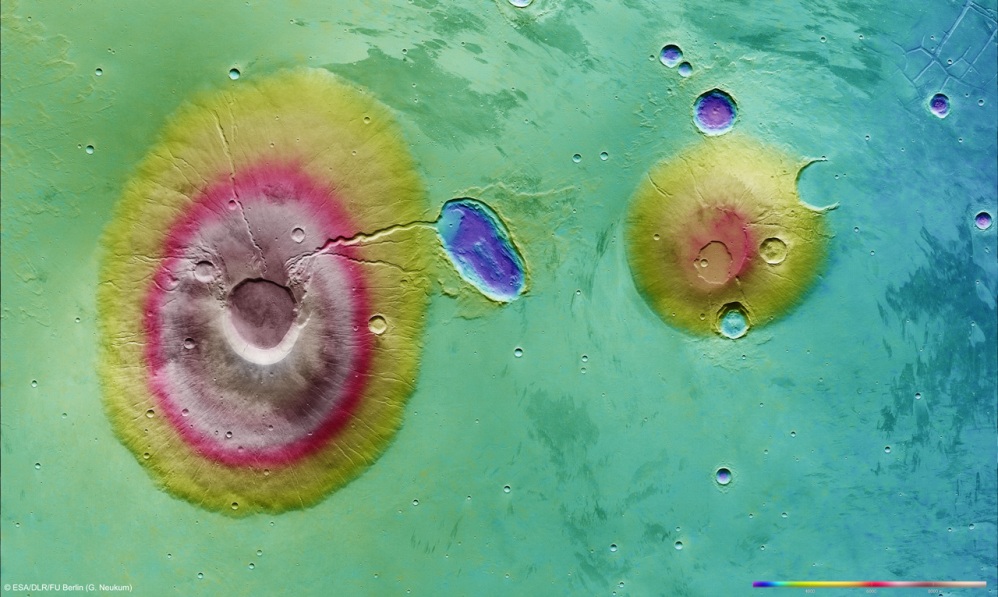
Ceraunius Tholus and Uranius Tholus, two Martian volcanoes, take on unearthly hues in this elevation model made with images captured by the European Space Agency's Mars Express spacecraft. The larger volcano, Ceraunius Tholus, rises 3.4 miles (5.5 kilometers) above its surroundings.
On Orion's Sword

Near the sword of the constellation Orion, an active stellar nursery lights up the darkness. Thousands of young stars and protostars develop here, many of which will turn into stars like our own sun.
Massive stars light up the Orion nebula, seen here as the bright area near the center of the image. To the north of the Orion nebula is a dark cloud of cold dust and gas. Here, a new generation of ruby red protostars jewel Orion's sword. NASA's Spitzer Space Telescope, which captured this image, recently detected tiny green crystals raining down on one of these baby stars like glitter from a surrounding gas cloud.
Big Storm, Little Moon
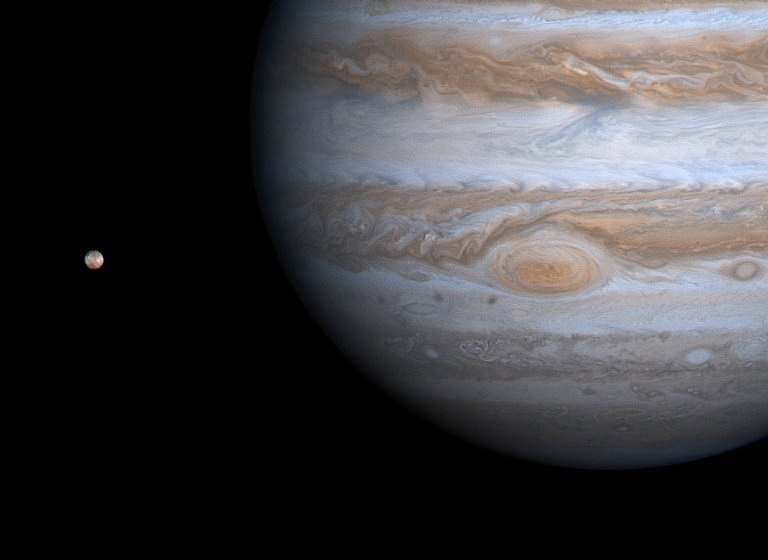
This amazing image, taken by NASA's Cassini spacecraft in 2000, shows Jupiter's closet large moon Io seemingly dwarfed by the planet's famous Great Red Spot. It's hard to comprehend the magnitude of the Great Red Spot, actually an enormous storm that has been raging on Jupiter for at least 400 years. Three Earths could fit within the boundaries of the storm.
In comparison, little Io looks relatively peaceful. But the moon is home to more than 100 active volcanoes, which spew out hot lava and giant plumes of dust and gas.
— Stephanie Pappas
An Old Explosion Shines Bright
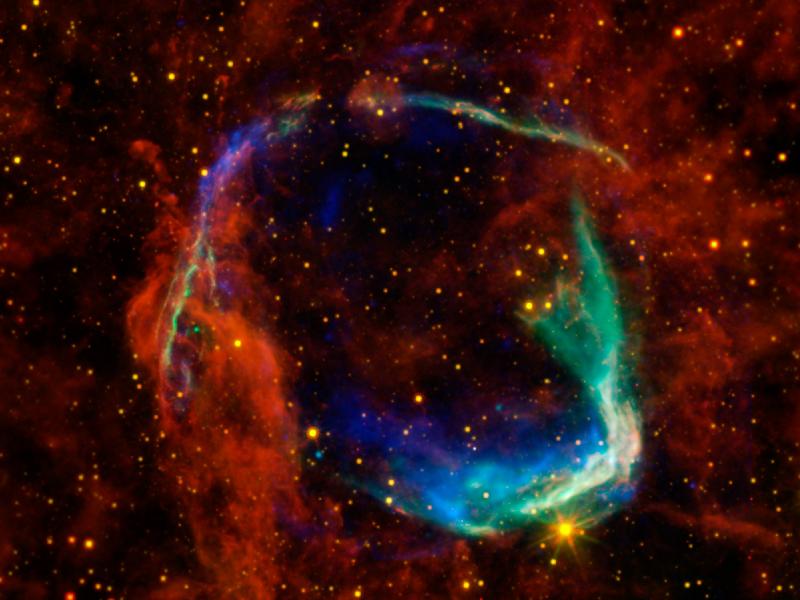
Almost 2,000 years ago, Chinese astronomers observed light from a star that exploded with amazing force 8,000 light-years away from Earth. The remnants of this supernova are still around today.
The supernova, known as RCW 86, was recorded by Chinese astronomers in 185 A.D. Today, astronomers use space telescopes to peer at the debris RCW 86 left behind. This image was stitched together with data from four space telescopes; the blue and green colors only show up on x-ray images. These x-rays show interstellar gas that has been heated to millions of degrees by the passage of the shock wave from the supernova. The red represents dust at a temperature of several hundred degrees below zero — cold to human senses, but quite warm compared to typical space dust in our Milky Way galaxy.
Jupiter & Crescent Moon Light Up the Night
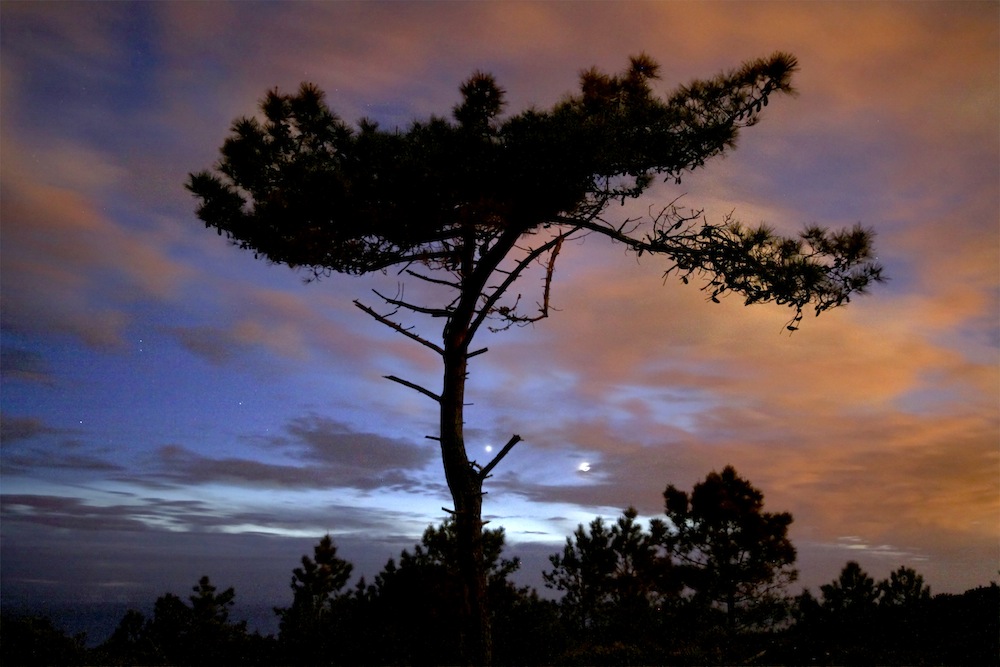
The moon and Jupiter appear to be neighbors in this June 2011 photograph taken taken on a cloudy night in Fonte-de-Telha, Portugal.
Spiral in Space

This may look like a fanciful illustration, but it's the real thing. The NASA/ESA Hubble Space Telescope snapped this shot of the spiral galaxy NGC 634 after a white dwarf star went supernova in the galaxy in 2008.
This photo was taken a year and a half after the supernova explosion, so the brilliance of the white dwarf's last breaths is no longer visible. But NGC 634 still sparkles from its perch in the Triangulum constellation, 250 million light years away from Earth.
— Stephanie Pappas
Solar Storm May Spark Dazzling Northern Lights Display
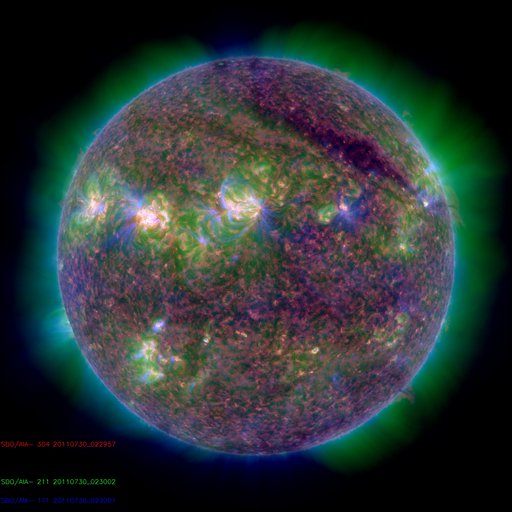
Skywatchers at high latitudes can expect spectacular aurora borealis displaysin the skies tonight (Aug. 5) thanks to a strong solar flare that hurled a cloud of plasma toward Earth on Aug. 2. The flare occurred when an intense magnetic event above sunspot 1261 hurled a stream of charged particles that's now headed toward Earth, according to SpaceWeather.com.
Also known as the Northern Lights, the aurora light show is the result of the interaction of these charged particles with Earth's magnetic field.
The image above, taken by instruments onboard NASA's Solar Dynamics Observatory, shows a powerful M9-class solar flare that erupted from the sun at 10:09 p.m. EDT on July 29 (0209 GMT July 30). M-Class flares are medium-strength events. The strongest type of solar eruption is class X, while class C represents the weakest, on the scale. The Aug. 2 flare registered as a middleclass M1 event. [Read more at SPACE.com]
A Great Comet Sets
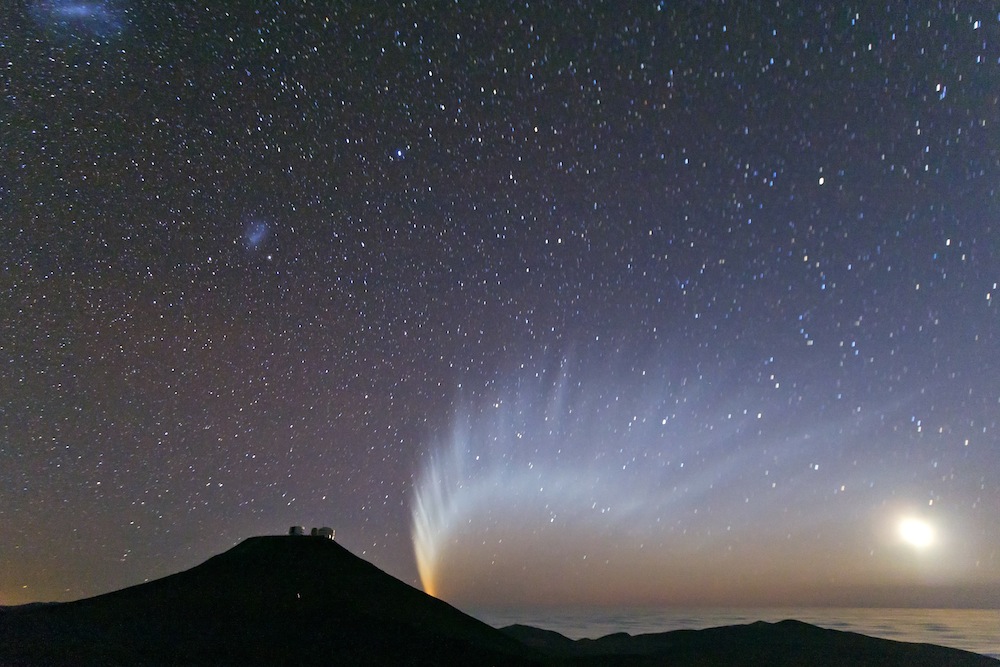
Comet McNaught, a comet discovered by British-Australian astronomer Robert H. McNaught, sets behind Mount Paranal, Chile in 2007. The comet, nicknamed the "Great Comet of 2007" was visible to the naked eye for southern hemisphere viewers. The comet was the brightest seen from Earth for 40 years, and researchers later discovered Comet McNaught to be the largest ever measured.
Sparkling Spirals: Our Galaxy Is Born
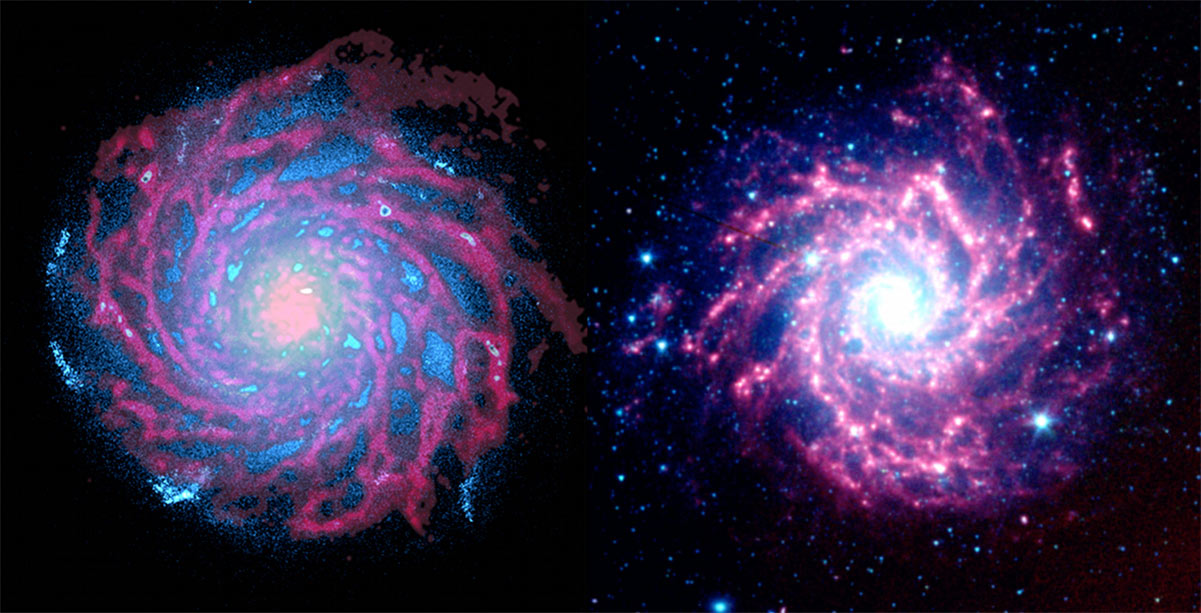
Astrophysicists have long tried to simulate the formation of our spiral galaxy, the Milky Way. Until now, such attempts have faltered on one of two points: Either the simulated spiral galaxies displayed too many stars at the center or the overall stellar mass was several times too big.
For their study, which is published in the Astrophysical Journal, the scientists created a computer model of a spiral galaxy similar to the Milky Way developing by itself without any intervention, offering a glimpse in time lapse into almost the entire genesis of a spiral galaxy. The above image shows our simulated galaxy (left), with gas in red and stars in blue, along with a false-color picture of the spiral galaxy M74.
The simulations, among other findings, showed that stars must be at the outer edge of the Milky Way.
Being able to use physical laws and processes to recreate the formation of a complex system like the Milky Way realistically is the ultimate proof that the underlying theories of astrophysics are correct.
An Amazing Race ... Around Saturn
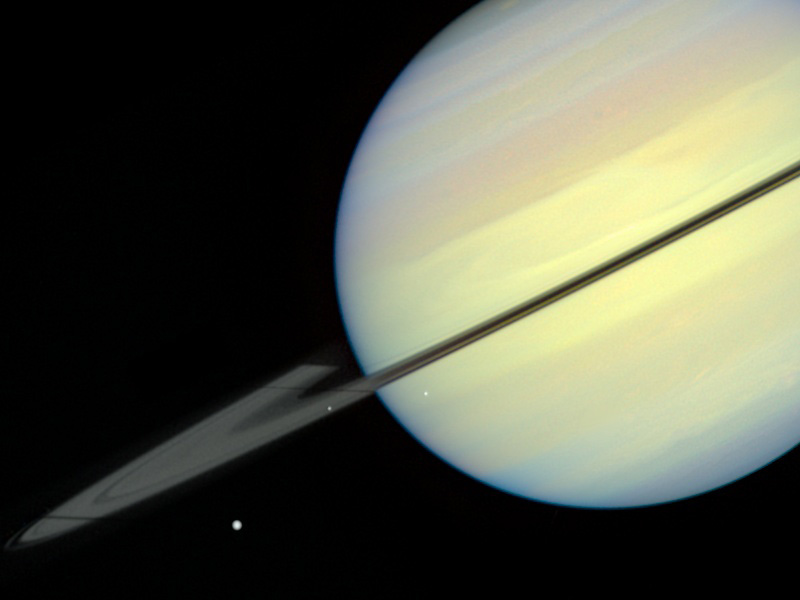
The moons Mimas, Enceladus and Dione whiz around Saturn in this 1995 image taken by the Hubble Space Telescope. At the time, the planet's rings were tilted nearly edge-on toward the sun, an event that happens only once every 15 years and allows the moons to cast shadows on Saturn and its rings.
Swirl of Stunning Stars
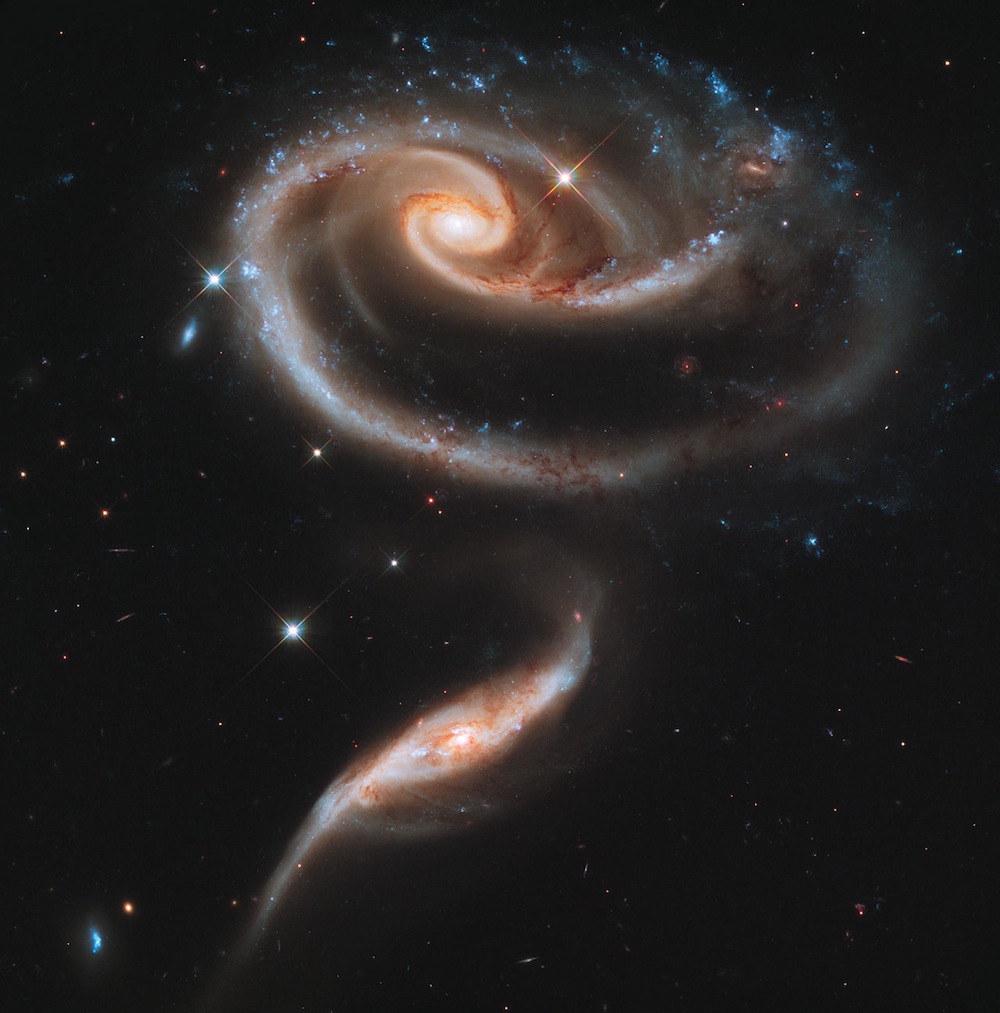
This image of a pair of interacting galaxies called Arp 273 was taken by the NASA/ESA Hubble Space Telescope and released in April 2011.
The distorted shape of the larger of the two galaxies shows signs of tidal interactions with the smaller of the two. It is thought that the smaller galaxy has actually passed through the larger one.
Silver Sliver in the Sky
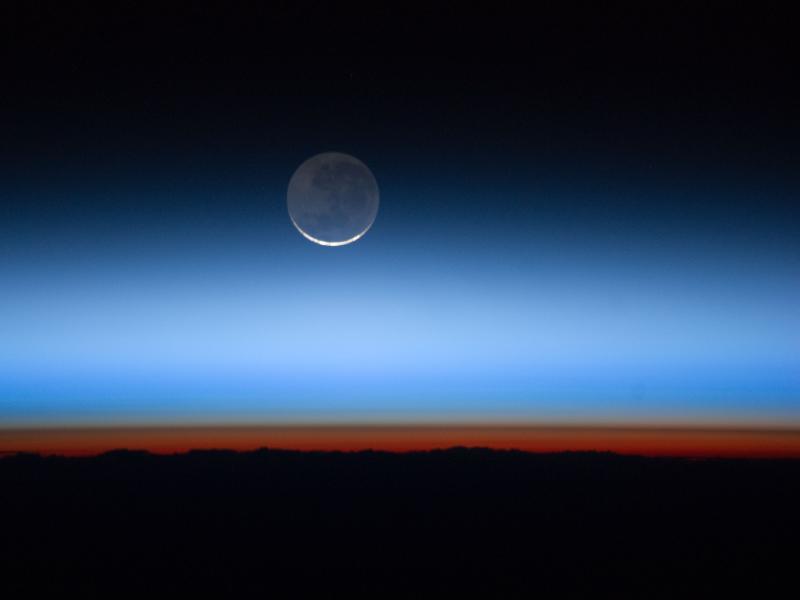
The moon hangs over the Earth in this astronaut photograph taken from the International Space Station. Space transitions into the orange-colored troposphere, the lowest portion of Earth's atmosphere. The line between the troposphere and the rest of the blue-colored atmosphere is called the tropopause.
Jelly With Your Fried Egg?

For sure this would be one giant (and explosive) breakfast. Spanning 1,000 times the diameter of the sun, this monster star known as IRAS 17163-3907 shines some 500,000 more brightly than the sun, researchers have just found. New observations of the star and its surrounding shells using the infrared camera aboard Very Large Telescope (VLT) revealed it is actually a yellow hypergiant. [50 Fabulous Deep-Space Nebula Photos]
If the fried egg nebula, which includes the star and its surrounding cloud of gas and dust, were placed in the center of the solar system, Earth would lie deep within the star itself, while Jupiter would orbit just above its surface. And the much larger surrounding nebula would engulf all the planets and dwarf planets, even veiling some of the comets that orbit far beyond Neptune's orbit. (The outer shell of the nebula has a radius of 10,000 times the distance from the Earth to the sun.)
"This object was known to glow brightly in the infrared but, surprisingly, nobody had identified it as a yellow hypergiant before," said Eric Lagadec, of the European Southern Observatory, who led the team that produced the new images, in a statement.
Yellow hypergiants like this one are in an extremely active phase of their life cycle, undergoing a series of explosive events. In fact, this star has ejected four times the mass of the sun in just a few hundred years, with that ejected matter forming the nebula's double shell. The explosions signal a nearing death for the star, which the researchers will be one of the next supernova explosions in our galaxy. Toast anyone?
Shattered Star Sends Mysterious Signal
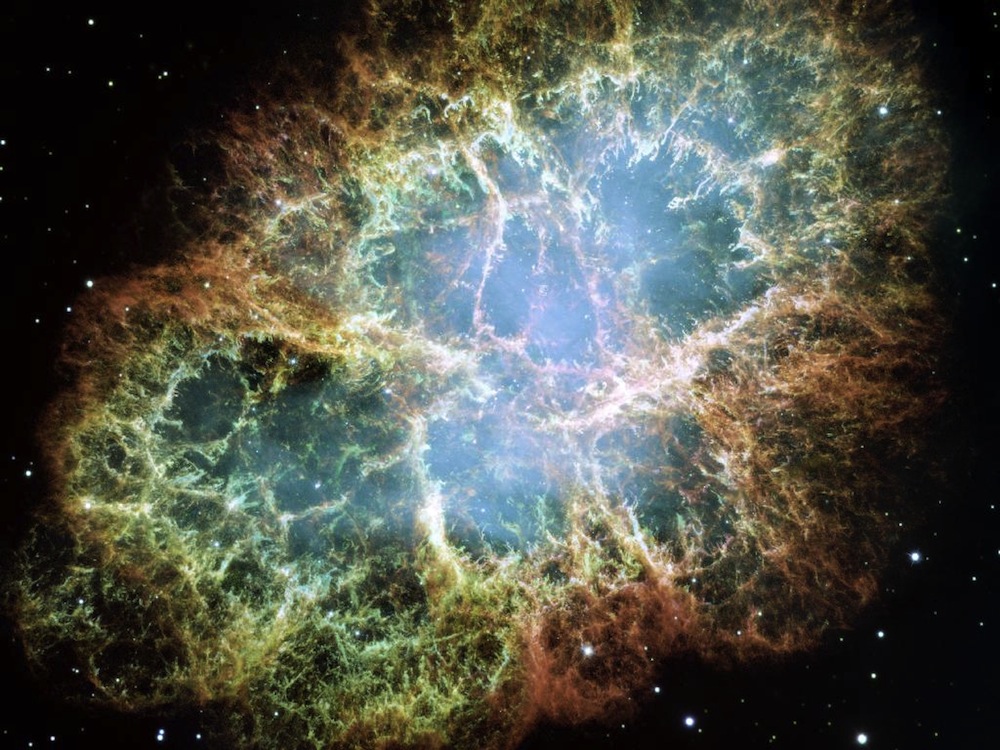
The Crab Nebula, the leftovers of a star that went out in a supernova in 1054, is sending out strange signals that scientists can't fully explain. According to research published in the Oct. 7, 2011 issue of the journal Science, astronomers have detected pulsed gamma rays from the neutron star within the nebula that are far higher than the scientists expected.
The pulsed gamma rays have energies between 100 billion and 400 billion electronvolts, far higher than the 25 billion electronvolts previously detected. A 400 billion electronvolt photon is almost a trillion times more energetic than the photons that make up visible light. Explaining this high energy is going to require major adjustments to astronomers' theories of the energy interactions in the nebula.
"The finding shows that the theory is not there yet," said study researcher Henric Krawczynski, a professor of physics at Washington University in St. Louis. "We know less about these systems than we thought."
Dashing Draconid Caught on Film
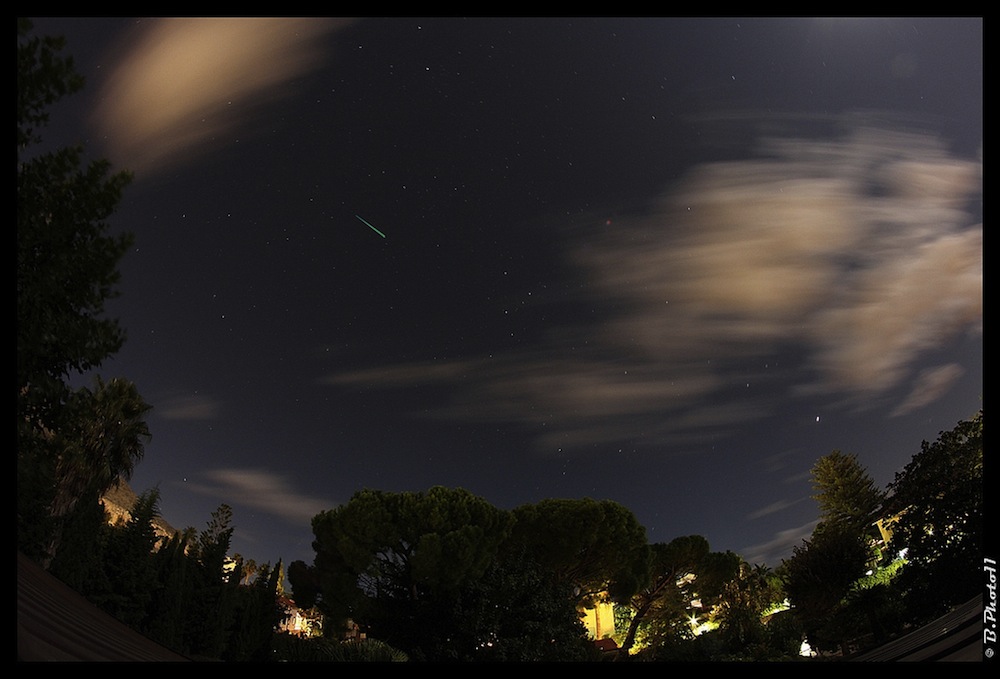
Although a waxing moon washed out the view of much of this year's Draconid meteor shower, a photographer in Palermo, Italy captured this shooting star on October 8. The 2011 Draconids were expected to be heavier than usual, because Earth passed directly through several strands of debris left behind by a passing comet. But the showers hit their peak while North America was in full daylight, and European skywatchers had to contend with a bright moon.
Galaxies Masquerade as Eyes in the Sky
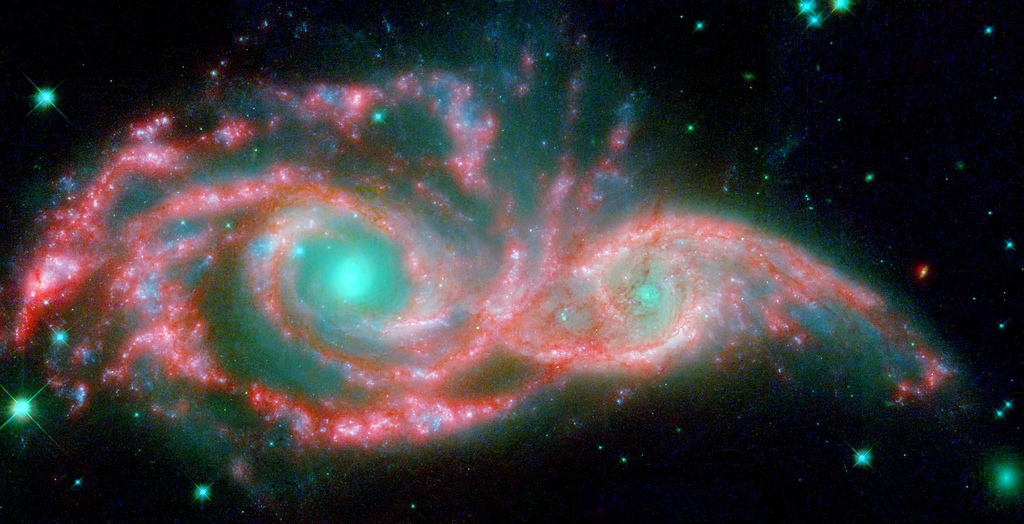
What are you going to be for Halloween? These two galaxies have joined forces to masquerade as two spooky eyes floating in space.
Galaxies NGC 2207 and IC 2163 met and began a slow gravitational merge about 40 million years ago. This false-color image of the galaxies shows their cores in blue-green and their spiral arms in bright red. Eventually, the two galaxies will become one.
Shocking Space Spider
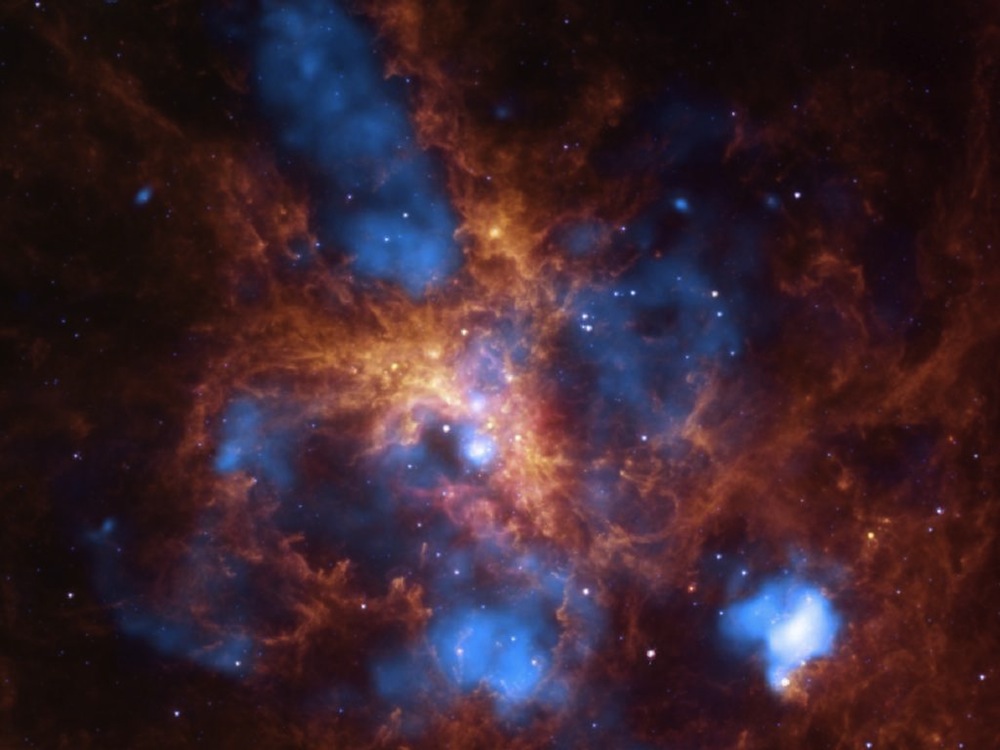
This star-forming region in the Large Magellanic Cloud is one of the closest to our own galaxy, the Milky Way. Known as the Tarantula Nebula, this stormy area encompasses 2,400 massive stars at its center, all producing intense radiation and powerful winds as they blow off material.
These supernova explosions and stellar winds form "shock fronts," which are similar to sonic booms. Multimillion-degree gas from these shock fronts is visible in blue in this Chandra X-ray Observatory and Spitzer Space Telescope image. The hot gas carves out bubbles in the surrounding cooler gas, shown here in orange.
Solar Fury

Boom! Or should that be 'Whooosh!'? We're not sure what sound a solar flare would make, but this oddly green image is of the most powerful solar flare measured by modern methods. The flare erupted from the sun early on Tuesday, Oct. 28 in 2003.
Solar flares are bursts of electromagnetic energy and particles that sometimes stream from the sun. Flare activity fluctuates in a 11-year cycle, which is currently ramping up. Some 2012 doomsday predictors, anxieties piqued by the upcoming end of the ancient Mayan long-count calendar, believe that peak solar flare activity in 2012 will spell the end for us all. But according to NASA, these doom-sayers are way off base. For one thing, the next solar flare maximum won't even occur in 2012; it's likely to hit in late 2013 or early 2014.
But more importantly, there's nothing particularly special about the next solar maximum. According to NASA, electromagnetic radiation from solar weather can disrupt satellite transmission, and in extreme cases, power grids, but precautions by satellite operators and electric companies can prevent problems. And counter to any "the world will end in fire" predictions, the sun doesn't have enough energy to send a solar flare 93 million miles to Earth, the space agency reports. As the above solar flare image reveals, we've all lived through solar maximums before and lived to tell the tale.
Stormy, Stormy Saturn

In the upper left of this photograph, the tail of Saturn's great northern storm riles the planet's atmosphere. This storm, observed by NASA's Cassini spacecraft, is both enormous and long-running; photos in 2010 captured it growing from a spot 800 miles (1,300 kilometers) top-to-bottom to a tempest 11,000 miles (17,000 km) across. The head of the storm is around the horizon in this Jan. 12, 2011 image, but the tail trails behind. In 2010, the tail lengthened until it encircled the entire planet, a circumference of about 186,000 miles (300,000 km) at that latitude.
In this false-color image, red and orange indicate clouds that are low in the atmosphere, while yellow and green are intermediate clouds. White and blue are high clouds and haze. The rings of the planet appear as a thin, bright blue line. The darkness in the lower left of the image is the shadow cast by Saturn's moon, Enceladus.
Tie-Dyed Asteroid Vesta
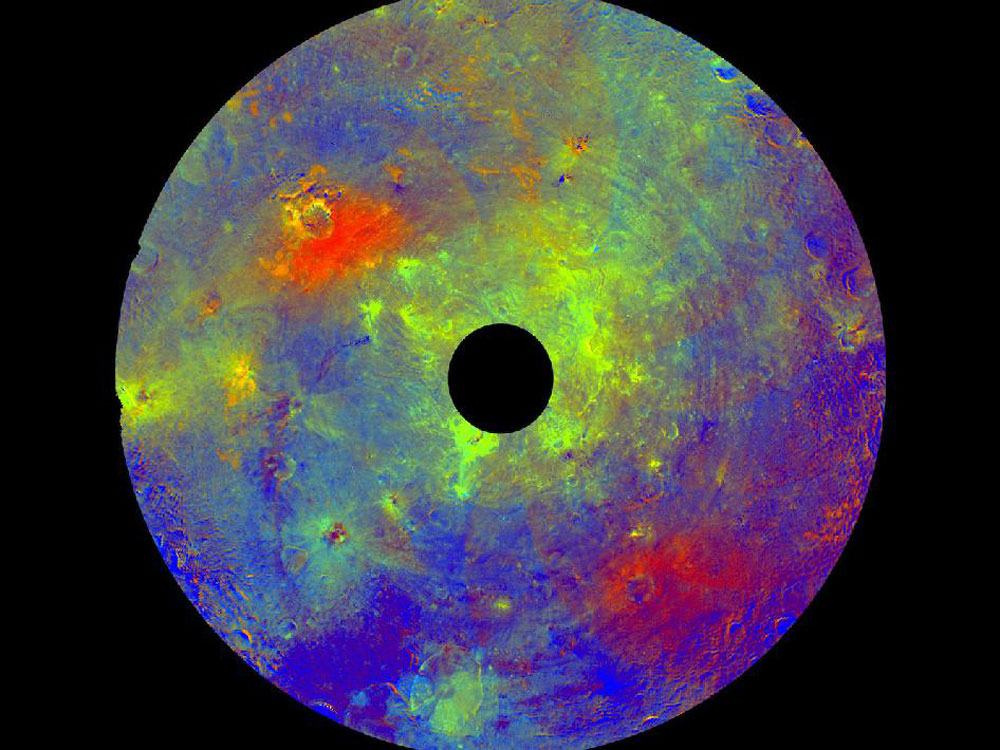
Color data obtained by the framing camera aboard NASA's Dawn spacecraft was used to show asteroid Vesta's southern hemisphere in a rainbow-colored palette. Colors were assigned based on the ratios of two wavelengths of radiation detected by the framing camera.
The shot is centered on the Rheasilvia formation, which is an impact basin that measures about 290 miles (467 kilometers) in diameter. Scientists used the colors to illustrate the asteroid's different rock and mineral types. For example, green suggests the presence of the iron-rich mineral pyroxene or large-sized particles.
The photo is actually a mosaic, composed of images taken while the Dawn spacecraft approached Vesta. The black hole in the middle is where data was omitted due to the angle between the sun, Vesta and the spacecraft.
Blood-Red Moon Eclipse

Early Saturday morning (Dec. 10), a total lunar eclipse will cast the moon into shadow and make it appear bright red. Skywatchers in western Canada and the United States should have a great view of the eclipse, which will start at 7:45 a.m. EST (4:45 a.m. PST, 1245 GMT).
Observers in Australia, New Zealand, and central and eastern Asia should also have a good view of the total lunar eclipse, which occurs when the Earth passes between the sun and the moon, throwing the moon into shadow.
The above stunning shot, taken by skywatcher George Tucker, is of a lunar eclipse observed on June 15, 2011. The photo was taken from the Sossusvlei Desert Lodge on the NamibRand Nature Reserve located in Namibia, a country in southern Africa.
Ghost Moon
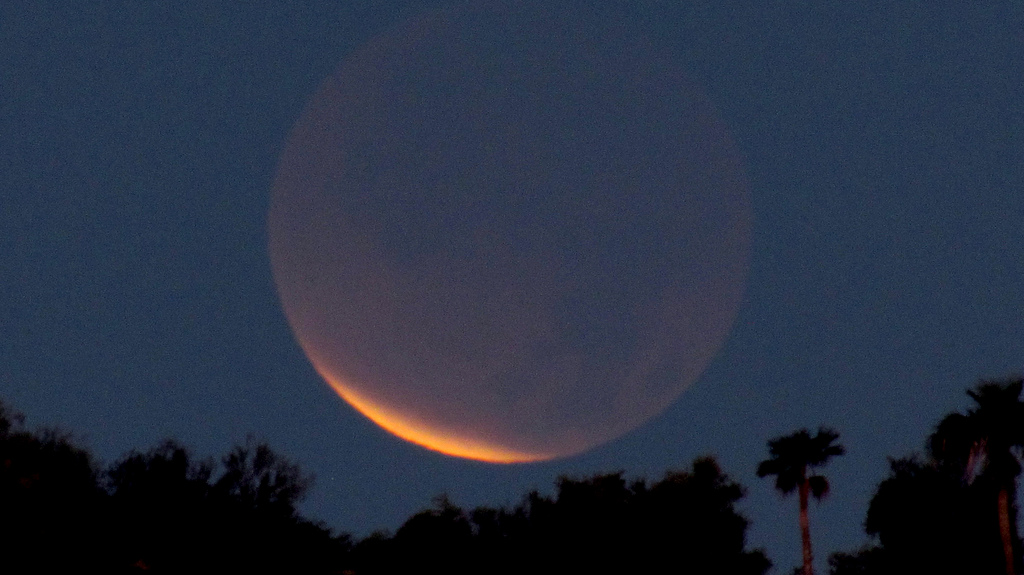
The moon is a shadow of its usual self in this photograph taken on Dec. 10 by a skywatcher in Phoenix, Ariz. That morning, the last total lunar eclipse until 2014 gave early risers a view of a reddened moon. The effect was due to the Earth passing between the sun and the moon, casting a shadow on the latter. [See more photographs of the lunar eclipse]
Amazing Glowing Hourglass

This incandescent hourglass, captured by the Hubble Space Telescope, is a compact star-forming region in the constellation Cygnus (The Swan). At the "neck" of the hourglass is a newly-formed star called S106 IR. That star is responsible for the hourglass shape of the surrounding hydrogen gas cloud, shown in blue.
Santa's Supernova

Like a Christmas ornament on a tree, the remains of an ancient supernova hangs against a background of green-colored gas and dust. This image, captured by NASA's Wide-field Infrared Survey Explorer (WISE) is of Puppis A, the remnant of a supernova that flared into view on Earth 3,700 years ago.
Puppis A formed when an massive star died with a bang, sending out a shock wave that heated the surrounding dust and gas clouds, seen here in red. Some of the green gas in this image is from yet another ancient supernova, the Vela supernova. That explosion is about three times older the Puppis A, but four times closer to Earth.
Love, Joy & a Happy New Year
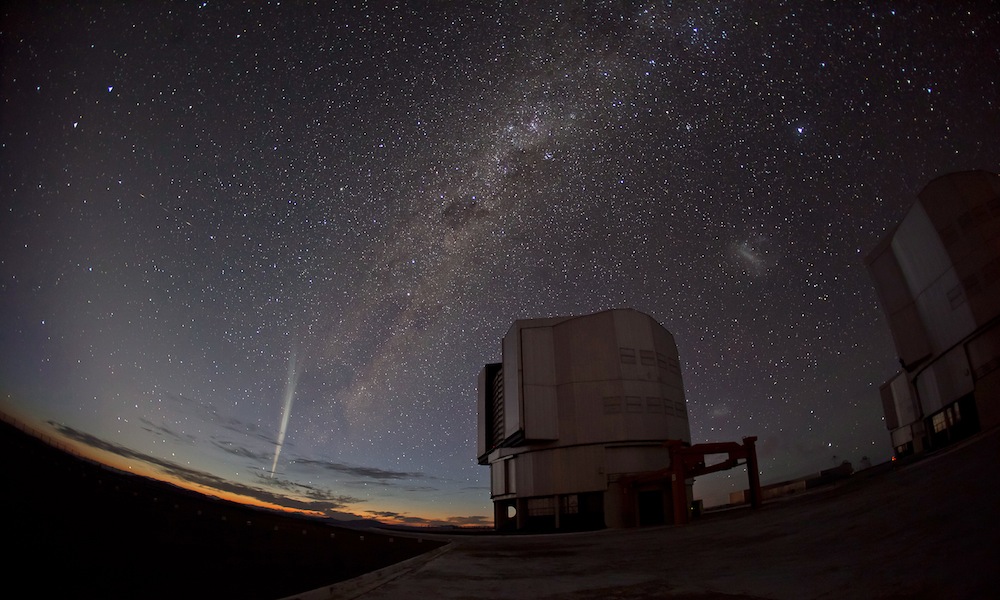
The comet LoveJoy streaks across the sky above the European Southern Observatory's Paranal Observatory in Chile. This newly discovered comet defied the odds earlier in the month, plunging into the sun's atmosphere Dec. 15 and surviving the fiery encounter.
Astronomers were shocked, but Lovejoy continues to put on a show. On Dec. 22, ESO astronomer Gabriel Brammer took this early-morning shot of Lovejoy set against the backdrop of the Milky Way, long tail of dust particles streaming behind it. The comet continues its orbit around the sun; if it survives, it will reappear in our skies in 314 years.
Dizzy Delight!

This artist's concept illustrates what scientists say is the fastest rotating star found to date. Called VFTS 102, the massive, bright young star rotates at a million miles per hour, or 100 times faster than our sun does. Centrifugal forces from this dizzying spin rate have flattened the star into an oblate shape and spun off a disk of hot plasma, seen edge-on in this view from a hypothetical planet. The star may have "spun up" by accreting material from a binary companion star, according to the scientists involved. The rapidly evolving companion later exploded as a supernova. The whirling star lies 160,000 light-years away in the Large Magellanic Cloud, a satellite galaxy of the Milky Way.
Stormy Sun
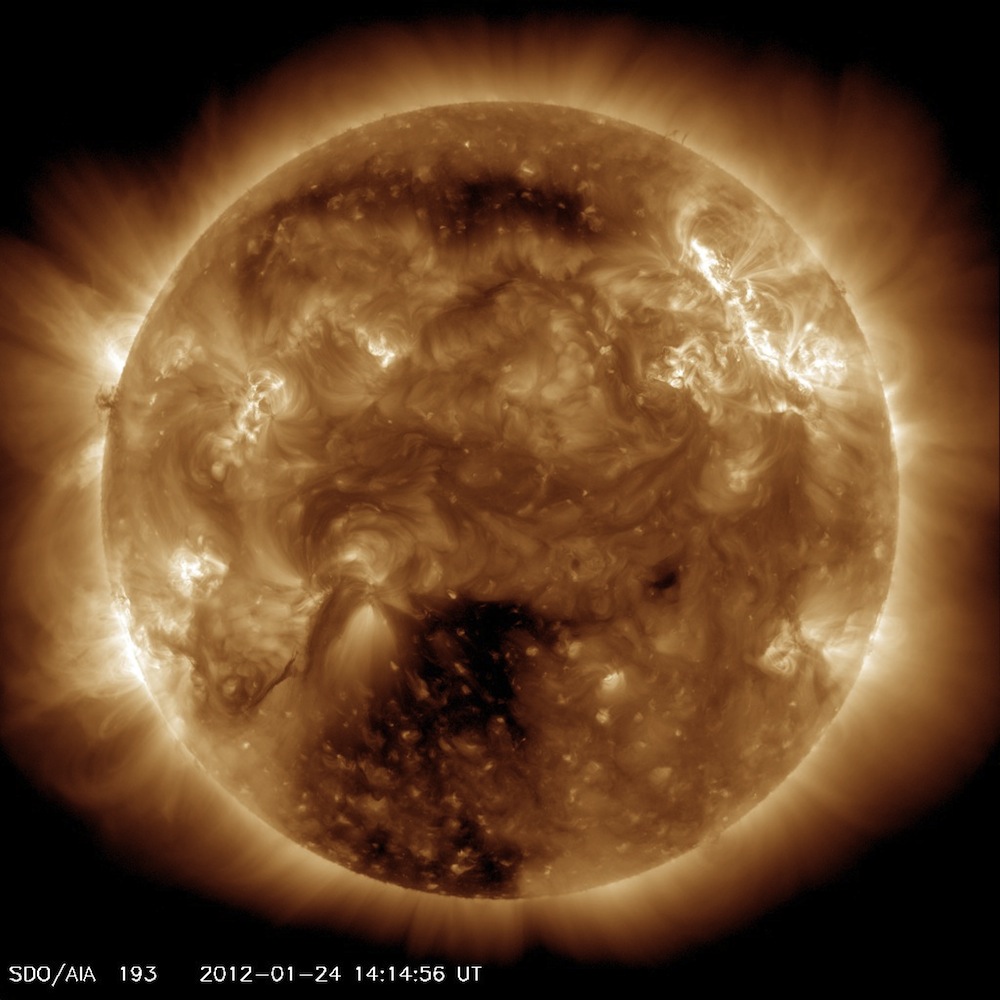
Things are heating up on our nearest star, as a powerful solar storm blasts particles toward Earth today (Jan. 24). Early on Jan. 23, a massive eruption blew out from the sun, an event called a coronal mass ejection. The eruption sent charged particles barreling toward Earth, which can disrupt satellite transmissions and cause problems for power grids if officials aren't prepared.
This image, captured at 14:14 Universal Time on Jan. 24 (9:14 a.m. EST}, shows our stormy sun. The sun goes through 11-year cycles of activity and is currently ramping up. Fears that these solar storms could trigger apocalypse on Earth, however, are overblown.
Doomed Asteroids
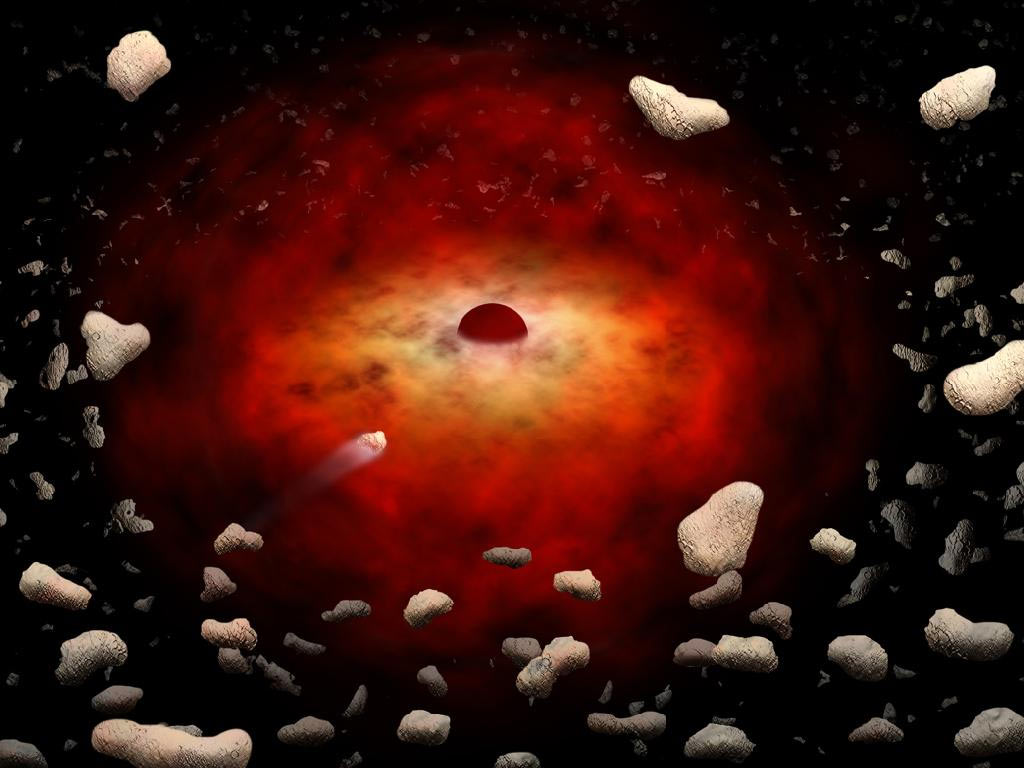
Can you guess what a black hole eats for dinner? A team of scientists may have just found a clue. They had wondered about the source of mysterious X-ray flares in the region of a supermassive black hole at the center or our galaxy called Sagittarius A*, or Sgr A*. A cloud around Sgr A* contains hundreds of trillions of asteroids and comets, which have been stripped from their parent stars. The flares occur when the black hole consumes asteroids having a radius of 6 miles (nearly 10 kilometers) or larger, they found.
If the asteroid passes within about 100 million miles (161 million kilometers) of the black hole, roughly the distance between the Earth and the sun, it is torn into pieces by the tidal forces from the black hole. These fragments would then be vaporized by friction as they pass through the hot, thin gas flowing onto Sgr A*, similar to a meteor heating up and glowing as it falls through Earth's atmosphere. A flare is produced and eventually the remains of the asteroid are swallowed by the black hole.
Interstellar Bangle

Looking for all the world like the work of a master jeweler, the dying star IC 4406 gives off an iridescent cloud of gas and dust. The Hubble telescope captured this side-on image of dust coming off the star in 2002. At this late point in the star's life, the material streaming away is called a planetary nebula. Nebulae are very symmetrical; if you could fly a spaceship around this one, it would look like a donut or a ring. Others have compared the look of this dying star to the look of they eye's retina, earning it the nickname the "Retina Nebula."
Pacman Sun

Remind anyone of a favorite arcade game? The new moon passes over the sun in this Feb. 21 image taken by NASA's Solar Dynamics Observatory. The partial eclipse was visible only from space.
The next partial solar eclipse Earthlings will be able to see will occur May 20, with views visible from Asia, the Pacific and western North America.
Dust and Lace in Space
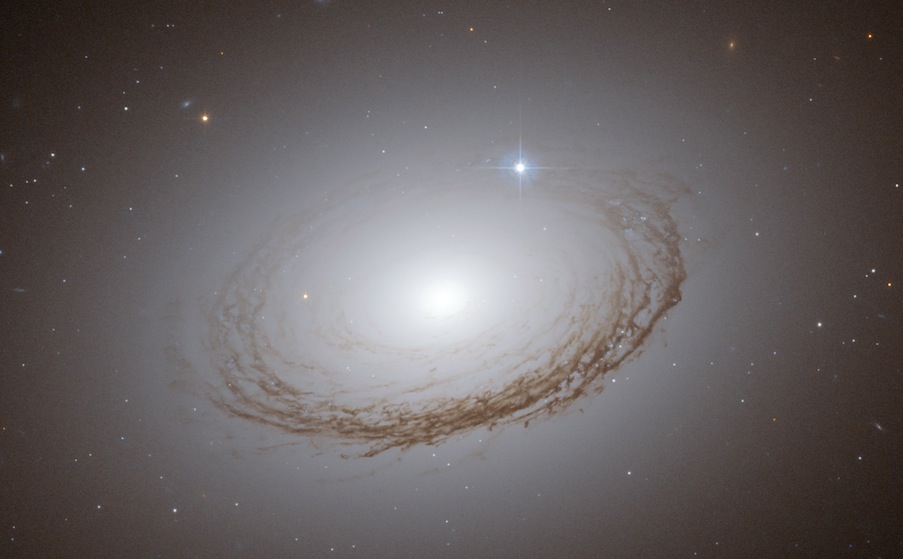
This beautiful backlit web of dust and stars is NGC 7049, a galaxy in the constellation of Indus in the southern sky. Sprinkled around 7049 are brilliant globular clusters, collections of stars that orbit the galaxy. The NASA/ESA Hubble Space Telescope snapped this photograph in 2009.
Colorful Collision

Ghostly rainbows seem to dominate the core of the galaxy cluster Abell 520 2.4 billion light-years away. In fact, the colors represent dark matter, galaxies and hot gas formed from the collision of massive galaxy clusters. Starlight is colored orange, hot gas is green, and blue areas represent the densest part of the cluster, most of which is dark matter.
Cotton Candy Sun
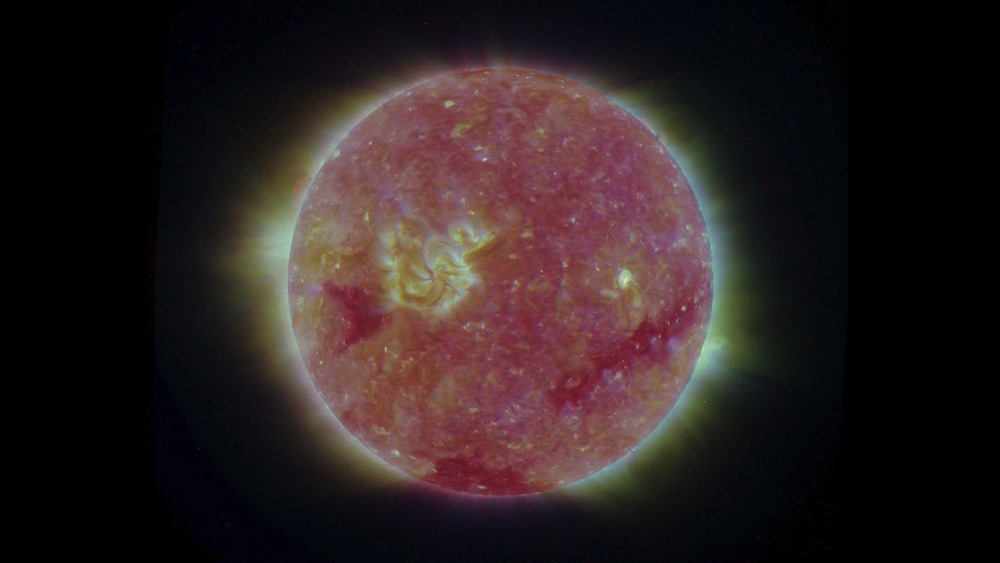
Has our sun turned into a Red Dwarf, er, make that Pink Dwarf, overnight? Fortunately, the answer is no. This pretty pastel image of the sun comes from NASA's Solar Terrestrial Relations Observatory (STEREO) satellites. This is one of the first batch of three-dimensional images beamed back from the STEREO project, though you'll need old-school red-and-cyan paper glasses to make the images pop.
This false-color image combines all of STEREO's wavelengths into one picture, enabling scientists to compare different features and wavelengths. The goal of the project is to better understand the physics of the sun, thus enabling scientists to more accurately predict space weather.
Alien Dust Devil!

NASA's HiRISE camera makes it possible to see the weather worlds and worlds away. Any guesses which planet this dust devil is sweeping across?
The rusty soil probably gave it away: It's Mars. The High Resolution Imaging Science Experiment (HiRISE) is a camera aboard the Mars Reconnaissance Orbiter,which sends back ultra-high-resolution images of the surface of Mars. HiRISE caught this alien twister scouring the dusty Martian surface in the late Martian spring. Researchers calculate that the dust plume reached 2,625 feet (800 meters) high. Martian winds blew the plume out toward the east as the dust devil itself headed southeast.
Stunning Sun Storm

Here's a storm you don't want to be caught in. On March 13, 2012, NASA's Solar Dynamics Observatory captured this image of an intense solar flare bursting from the sun's surface. The flare peaked at 1:41 p.m. EDT, part of a week of high activity from this region of the sun.
There are three classifications of solar flares, based on x-ray brightness. X-class is the most intense, followed by M- and C-class flares. This flare, shown in a teal-colorized wavelength, is an M-class flare.
Glitter at the Center of the Galaxy
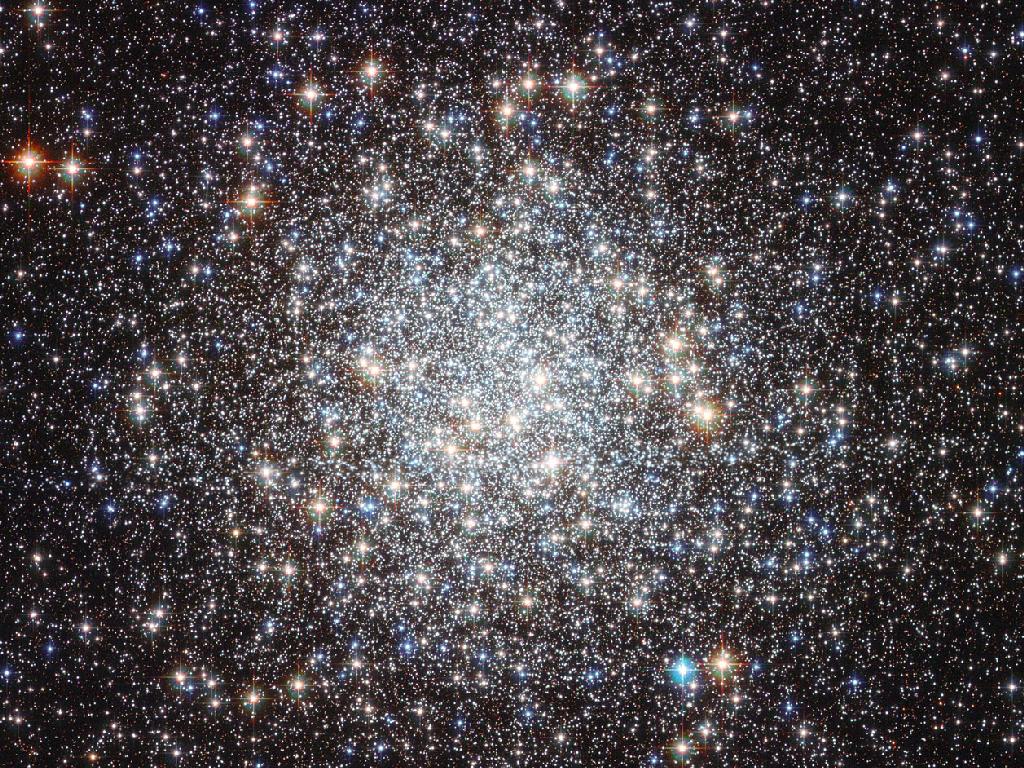
A dazzling display of stars sparkles near the center of the Milky Way — too dim for human eyes, but not for the Hubble Space Telescope. This image is of Messier 9, a globular star cluster of over 250,000 stars close to the center of our galaxy. These sphere-shaped groups of stars are thought to contain some of the oldest stars in the galaxy, according to NASA. These pinpoints of light in Messier 9 are twice as old as our sun.
Blowing Smoke Rings at the Edge of Space
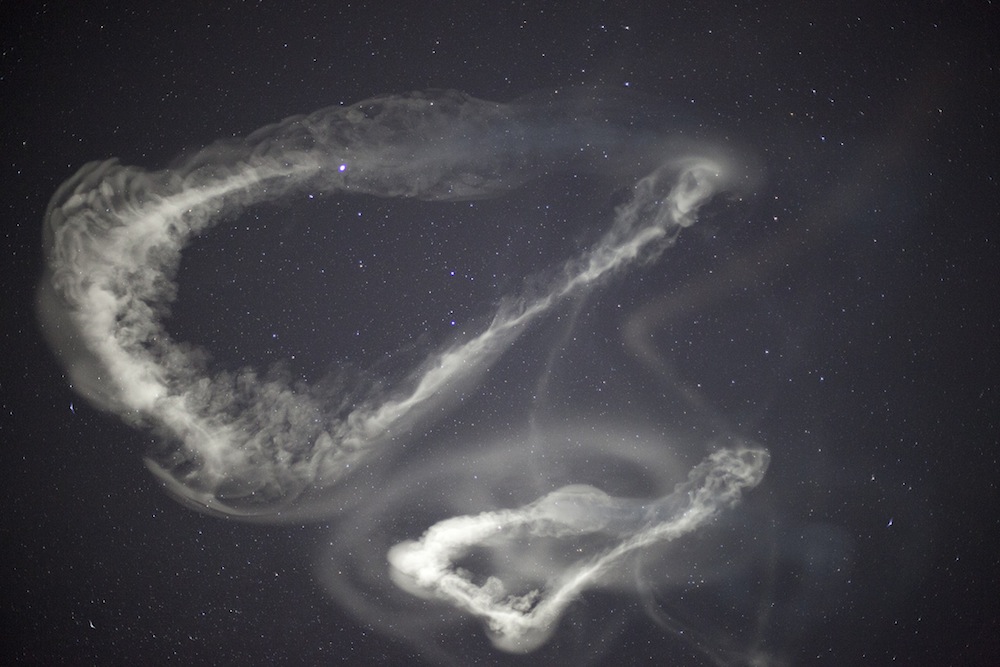
These strange circular clouds are no natural phenomenon. They were created by NASA in order to study the circulation in the atmosphere over North America.
On March 27, NASA successfully launched five suborbital rockets in order to study the upper level jet stream. Each rocket, launched one after another 80 seconds apart, released a chemical tracer to create these milky clouds at the very edge of space, 65 miles (105 km) up.
Tracking the movements of the clouds will help researchers understand air movements at this level of the atmosphere. Meanwhile, these enormous cloud rings were visible as far south as Wilmington, N.C. and as far north as Buffalo, N.Y.
Zooming in on Saturn's Rings
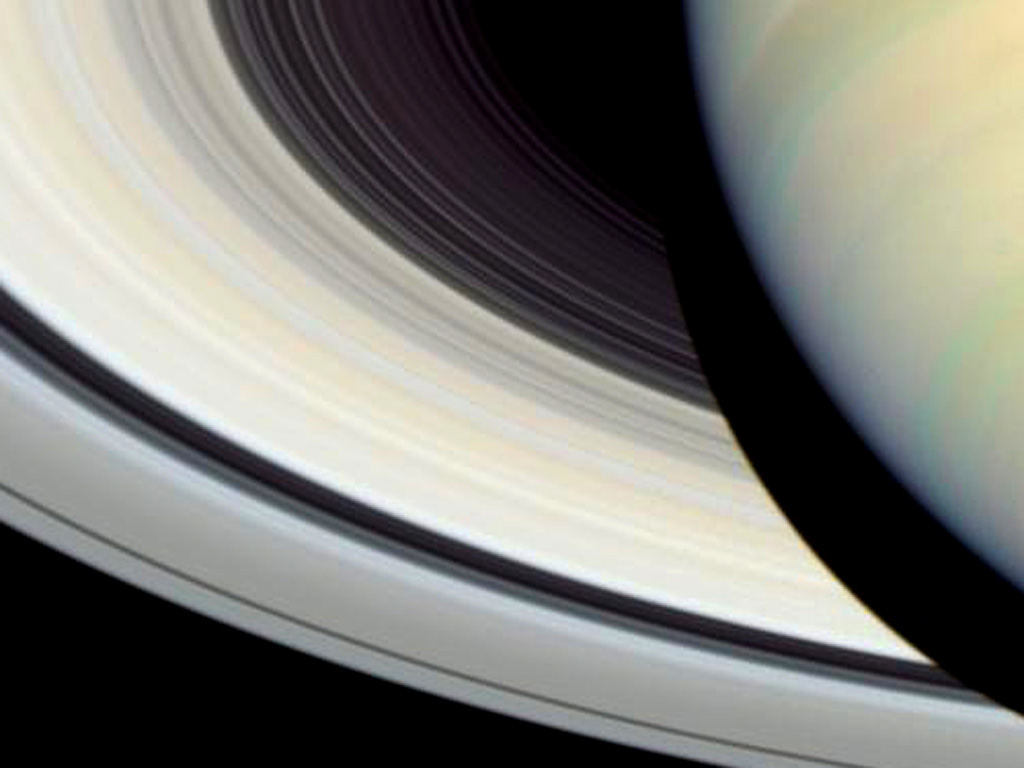
Saturn is ready for her close-up. This image, taken by the Hubble Space telescope in 2004, offers a stunning view of the planet's rings. Saturn boasts 9 continuous main rings as well as three fragmentary arcs; they're made mostly of ice with some dust and rock mixed in. In this image, the main body of the planet casts a dark shadow on the rings.
Technicolor Tarantula Nebula
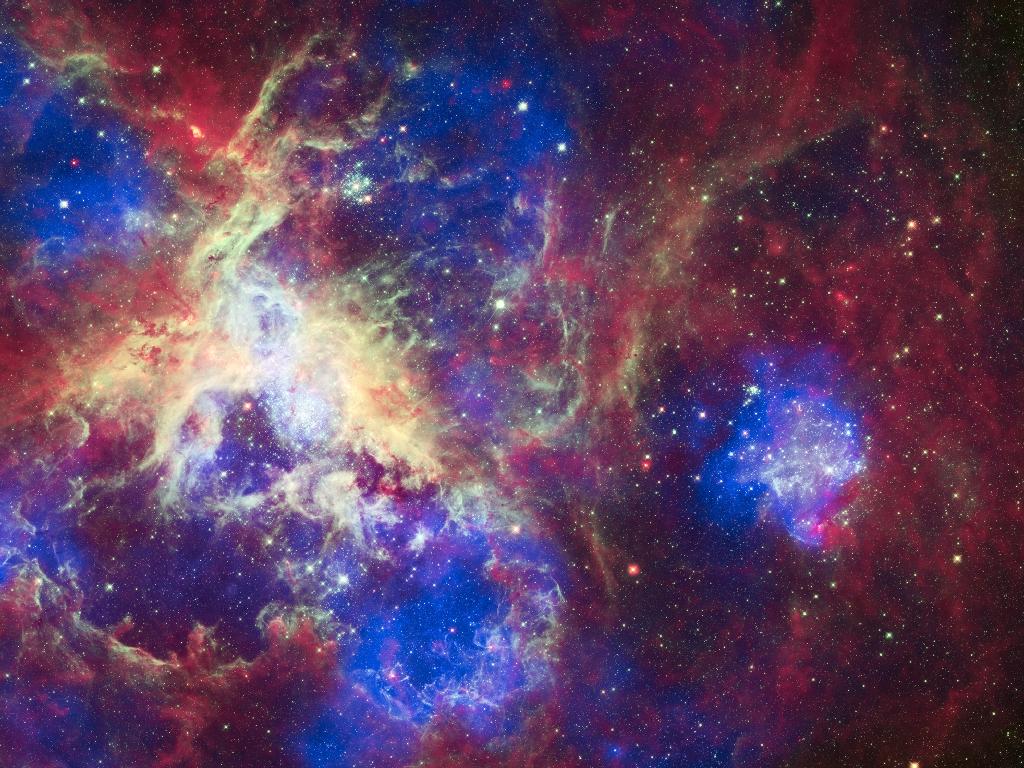
The Hubble Space Telescope doesn't get gifts on its birthday — it gives them. To commemorate its 22nd anniversary in orbit, the telescope helped make possible this vibrant image of the Tarantula Nebula, a star-forming region in the Large Magellanic Cloud.
This image is a composite, with x-ray energy seen by the Chandra X-ray Observatory visible in blue, light seen by Hubble in green and infrared emissions captured by the Spitzer observatory in red. The x-rays are caused by sonic-boom-like shock waves associated with stellar activities, the light is emitted by stars of different ages, and the infrared emissions represent relatively cool gas and dust.
Two Galaxies for the Price of One
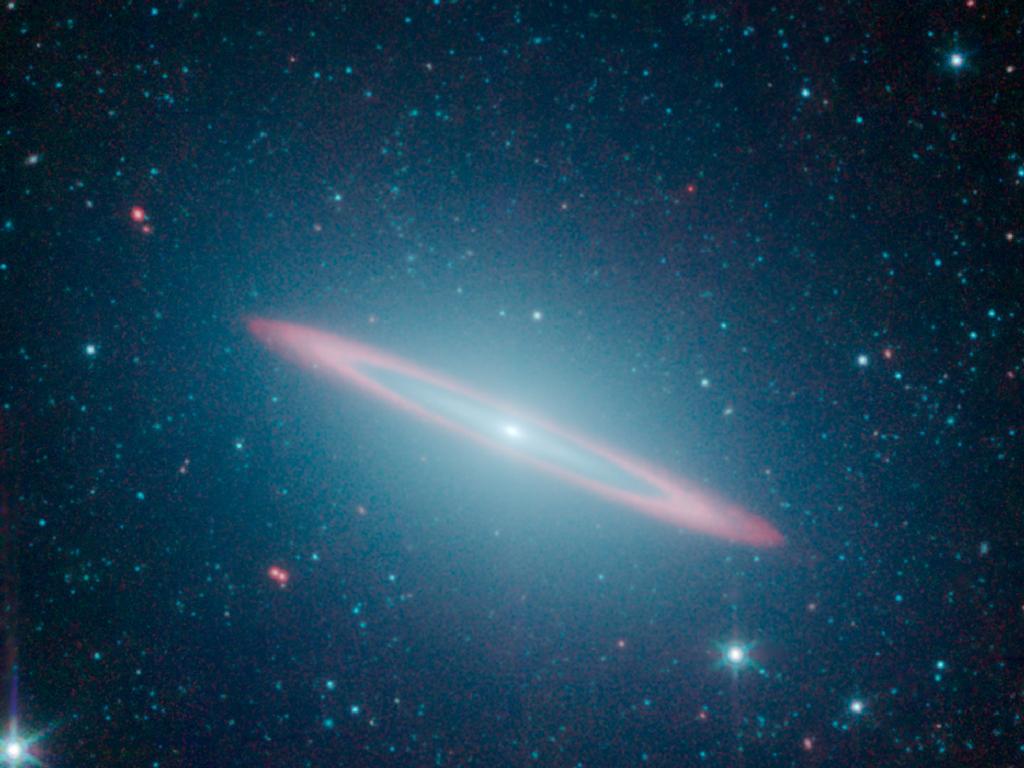
Named for its resemblance to a wide-brimmed hat, the Sombrero galaxy is actually two galaxies in one, NASA's Spitzer Space Telescope has revealed. This image shows a large elliptical galaxy in blue-green, with a thin disk galaxy (red) embedded within. Previously, researchers believed the Sombrero was a simple flat disk galaxy.
Squashed Supermoon
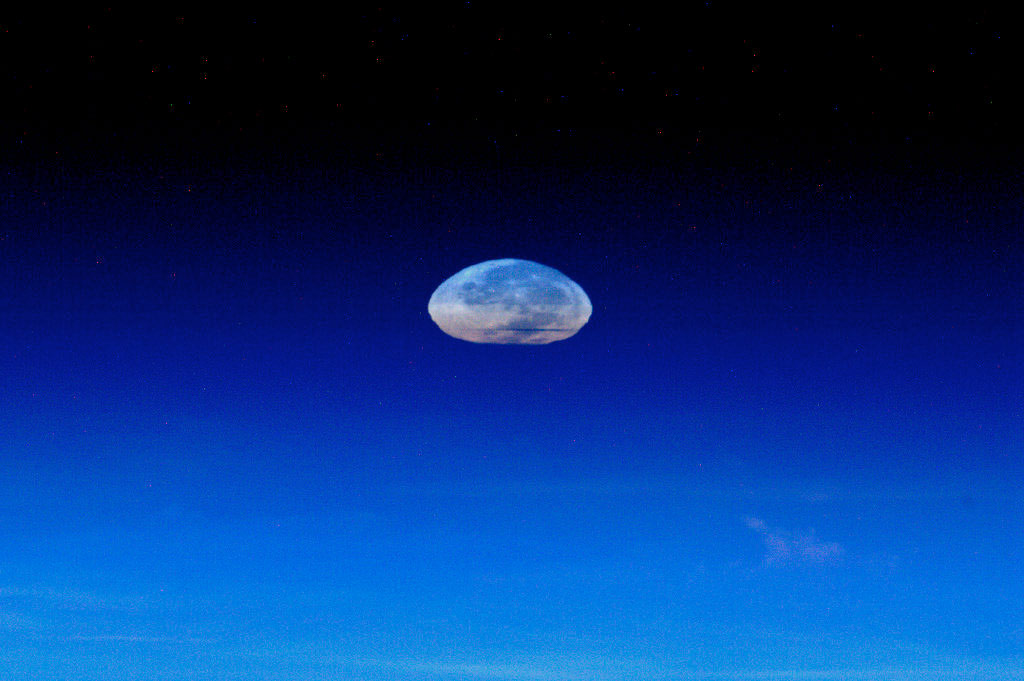
The Supermoon appears to be sinking into the atmosphere. The image was taken by André Kuipers from aboard the ISS on May 5, 2012.
Martian Art
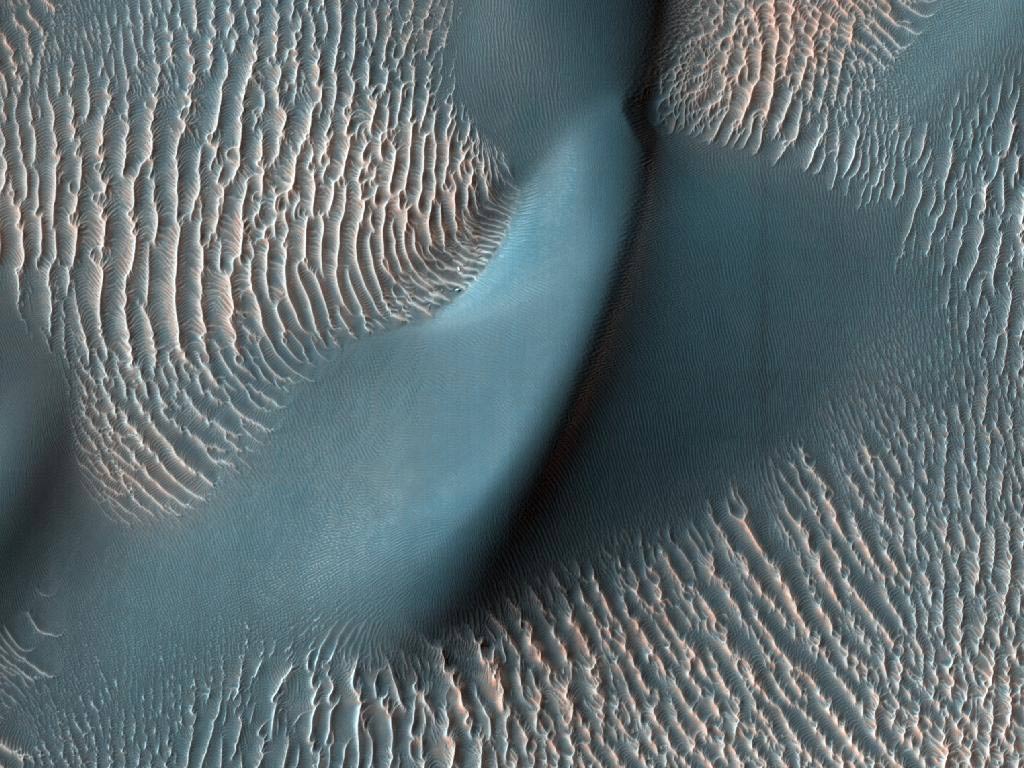
The alienlike beauty of this image, taken by a camera aboard NASA's Mars Reconnaissance Orbiter (MRO), may seem to portend some Martian artists. Alas, the ridges and ripples are evidence of Martian sand dunes. The brighter features represent two classes of so-called aeolian bedforms within Proctor Crater. The ripples, research has shown, are composed of fine sand or fine sand coated with coarser sand and granules. And the larger, darker bedforms are dunes composed of sand, possibly derived from basaltic, or volcanic, rock (and hence the darker color). Ripples tend to move slower than dunes. Because of this, over time, ripples get covered with dust, possibly explaining the bright tone visible here. The image was taken by the MRO's High Resolution Imaging Science Experiment (HiRISE) on Feb. 9, 2009.
Setting Solar Eclipse

The setting sun is partially eclipsed by the moon on May 20 in this photograph taken 25 miles (40 km) southeast of Tulsa, Okla. The May 20 solar eclipse was visible from parts of Asia, the Pacific and the western United States.
Glow Stick Sun
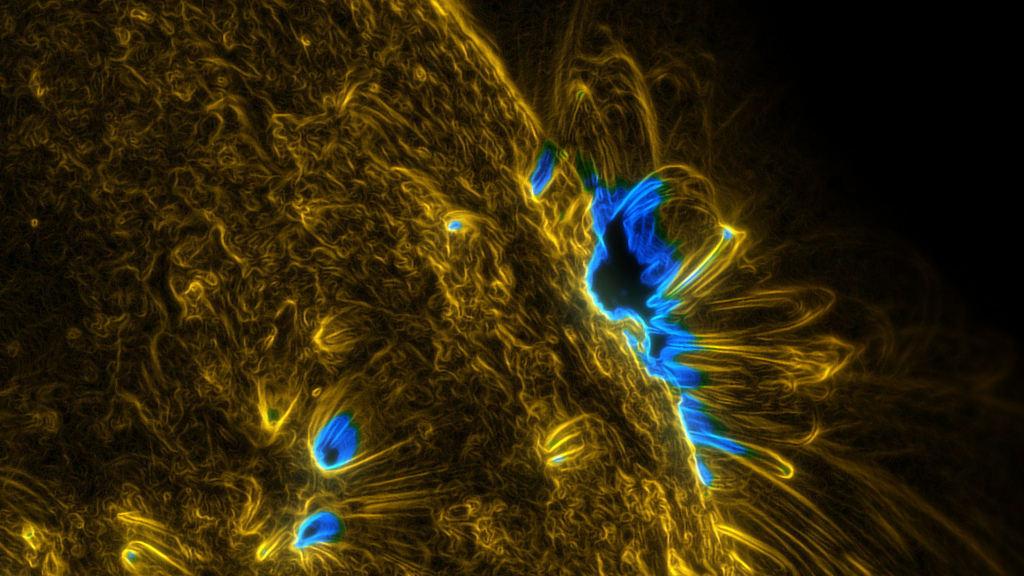
This is the sun as you've never seen it before. NASA researchers applied extra processing to a sun snapshot taken by the Solar Dynamics Observatory (SDO) to create this trippy image. Loops of plasma are held in place by the sun's strong magnetic fields, concentrated in active regions that are visible to the naked eye as sunspots. This is a look at the sun on Sept. 25, 2011.
Fiery Approach
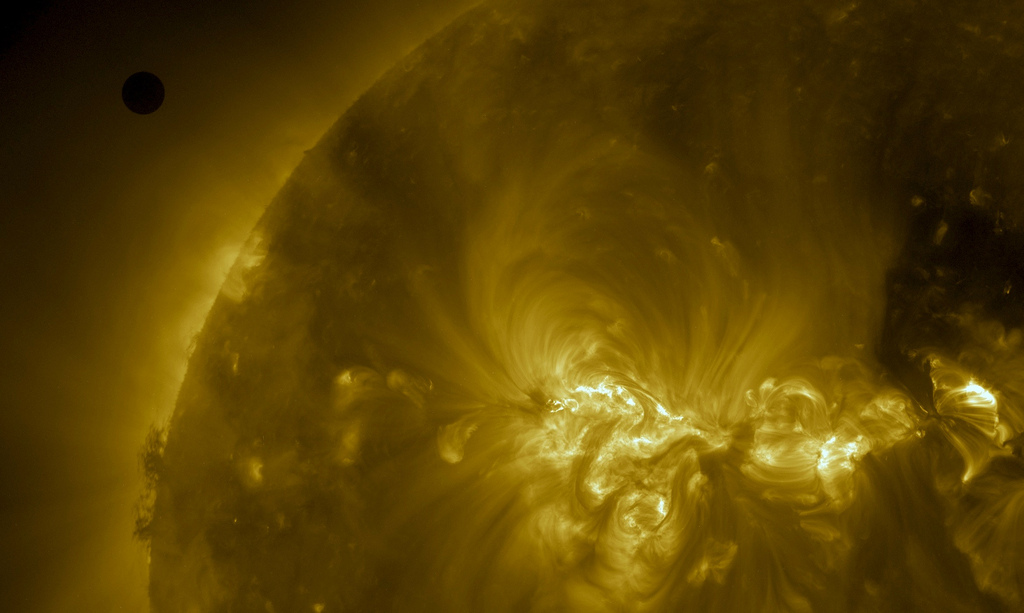
Venus (upper left) approaches the sun before its transit in this stunning satellite image.
Lonely Lyrid
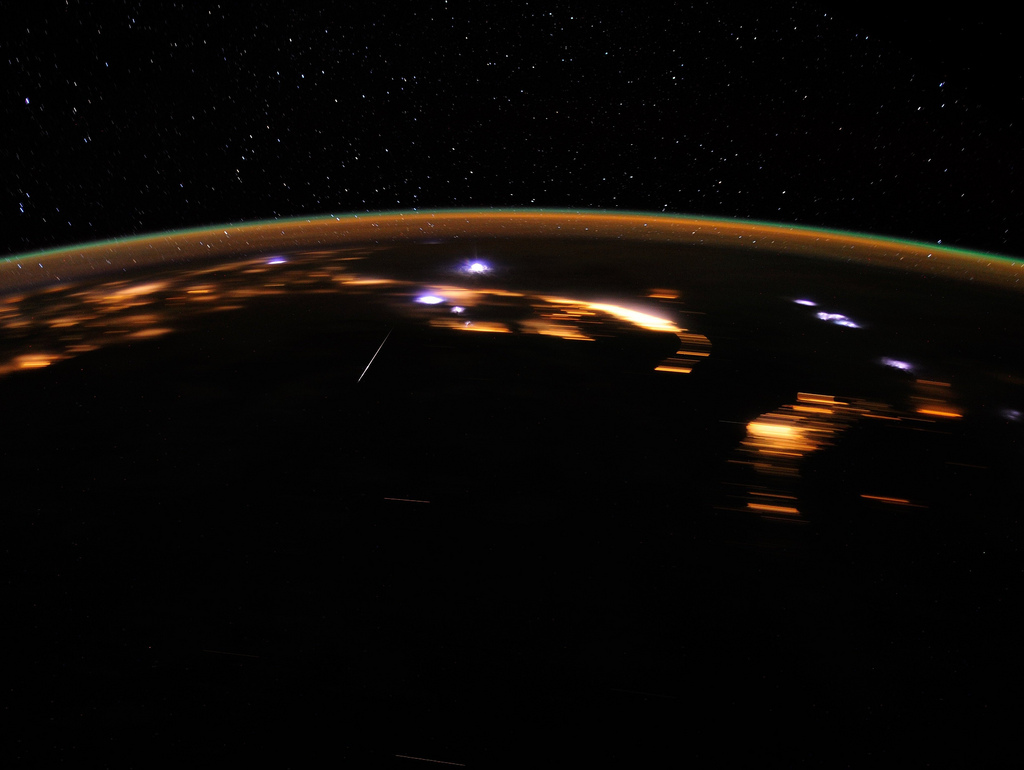
A single meteor streaks toward Earth in this image from the night of April 21, 2012. Astronaut Don Pettit snapped this photograph from his perch in the International Space Station (ISS) during the 2012 Lyrid meteor shower. Behind the meteor, city lights outline the shape of Florida and the eastern Gulf Coast. Cuba and the Florida Keys are to the right.
Birthing Stars in War & Peace
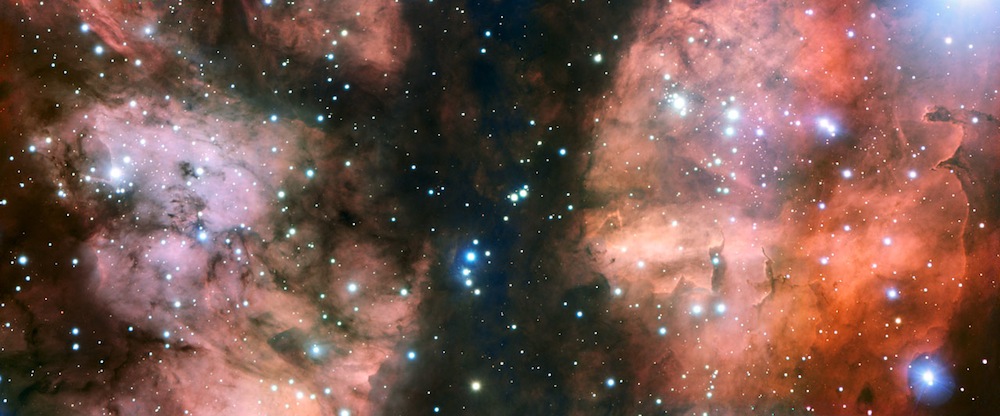
Amidst clouds of dust and gas, new stars are born in the constellation of Scorpius. This glittering image is the best ever taken of the War and Peace Nebula, a star-forming region found in Scorpius. Created by the European Southern Observatory's Very Large Telescope, this photograph shows bright blue-white baby stars amidst gas clouds. A stream of dust through the nebula darkens the center of the image.
The War and Peace Nebula got its name because scientists on the Midcourse Space Experiment thought that one half of the nebula looked like a dove, while the other half looked like a skull. That effect isn't visible in this newest image.
Saturn's Jet Stream
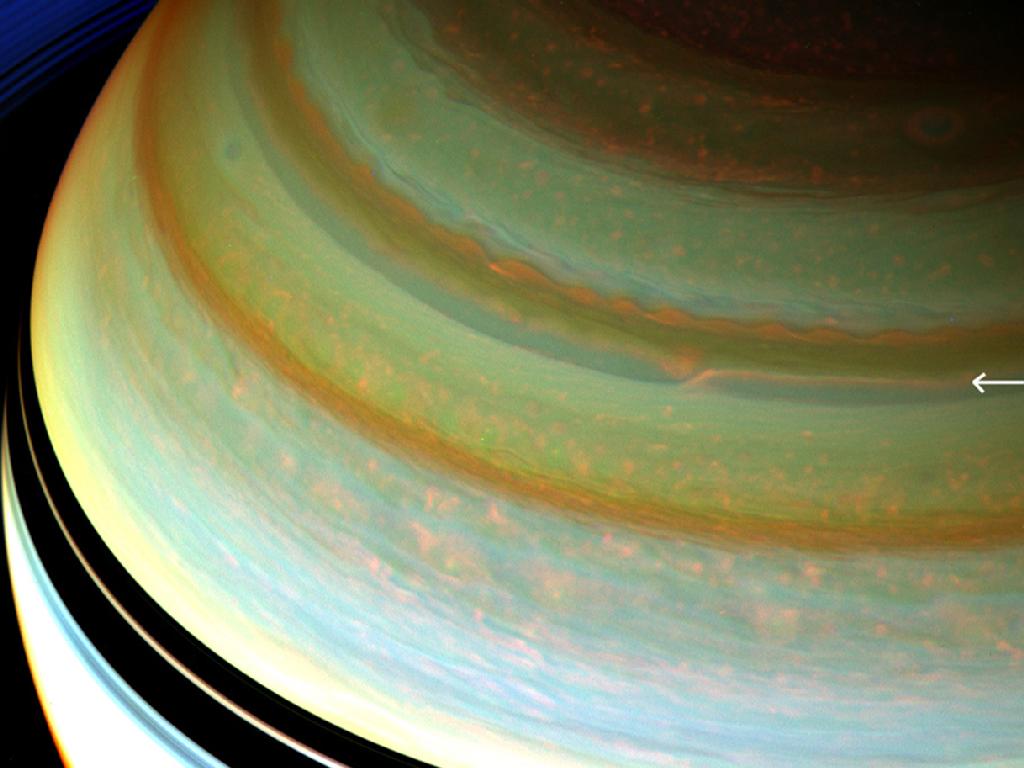
Earth isn't the only planet with weather. Here, a strong jet stream moves across Saturn's northern hemisphere. About a third of the way down the upper right of this image, clouds associated with the jet stream appear as a thin orange band that suddenly doglegs south. This jet stream, photographed by NASA's Cassini spacecraft, has been visible since NASA's voyager spacecraft, launched in 1977, took its first look at Saturn. In those days, the jet stream wiggled like a ribbon. Today, the air currents have changed and the stream no longer undulates.
Real-Life Fireworks
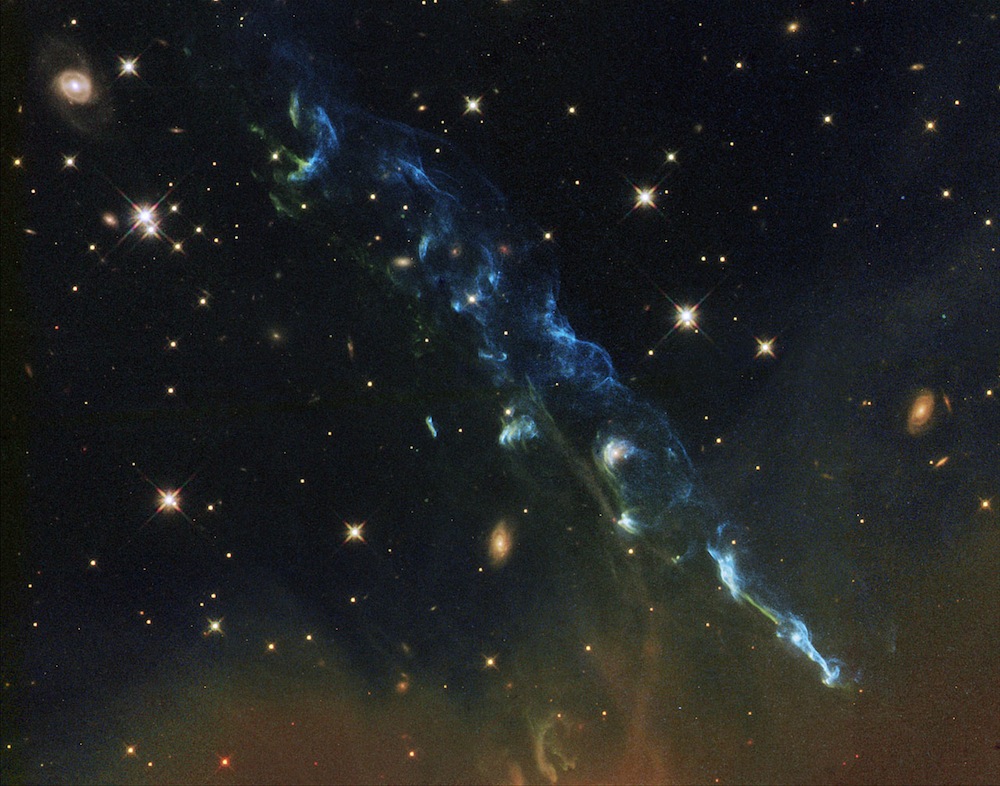
A stream of hot gas flows across space in this Hubble Space Telescope image of a newborn star. This gas geyser is known as Herbig-Haro 110. The patterns of the gas ejection can tell researchers the history of the star's birth. Times when more matter fell into the star are recorded as bright blobs in the half light-year stream.
Stellar Burp

Camelopardalis, or U Cam for short, is a star nearing the end of its life. As stars run low on fuel, they become unstable. Every few thousand years, U Cam coughs out a nearly spherical shell of gas as a layer of helium around its core begins to fuse. The gas ejected in the star's latest eruption is clearly visible in this picture as a faint bubble of gas surrounding the star. U Cam is an example of a carbon star, a rare type of star with an atmosphere that contains more carbon than oxygen. Due to its low surface gravity, typically as much as half of the total mass of a carbon star may be lost by way of powerful stellar winds. Located in the constellation of Camelopardalis (The Giraffe), near the North Celestial Pole, U Cam itself is much smaller than it appears in this Hubble image. In fact, the star would easily fit within a single pixel at the center of the image. Its brightness, however, is enough to saturate the camera's receptors, making the star look much larger than it is.
The shell of gas, which is both much larger and much fainter than its parent star, is visible in intricate detail in Hubble's portrait. This phenomenon is often quite irregular and unstable, but the shell of gas expelled from U Cam is almost perfectly spherical.
Saturnian Swirl

A Petri dish experiment gone bad? A growth on lunch you left out last month?
It's much more appealing, though it is gassy. … This true color image captured by NASA'S Cassini spacecraft before a distant flyby of Saturn's moon Titan on June 27, 2012, shows a south polar vortex, or mass of swirling gas, in the moon's atmosphere. The vortex seems to complete one full rotation in nine hours, while Titan takes about 16 days to spin once around its axis.
The vortex, which is swirling at a high altitude could be a response of Titan's stratosphere to seasonal cooling as the southern winter nears, according to NASA scientists. "Polar vortexes have also been observed on Saturn, Jupiter, Neptune, Earth and Venus, scientists say. [Read the full story]
Green Eggs and Ham?

The Seussian colors of this image aren't the result of some egg experiment gone wrong. NASA's STEREO-Ahead spacecraft captured this photo of an eruption on the sun on July 2, 2012. The solar flare, seen here in green, occurred on the side of the sun that faces Earth, but was directed toward the south, preventing any electromagnetic disturbances from the event.
From the Hip
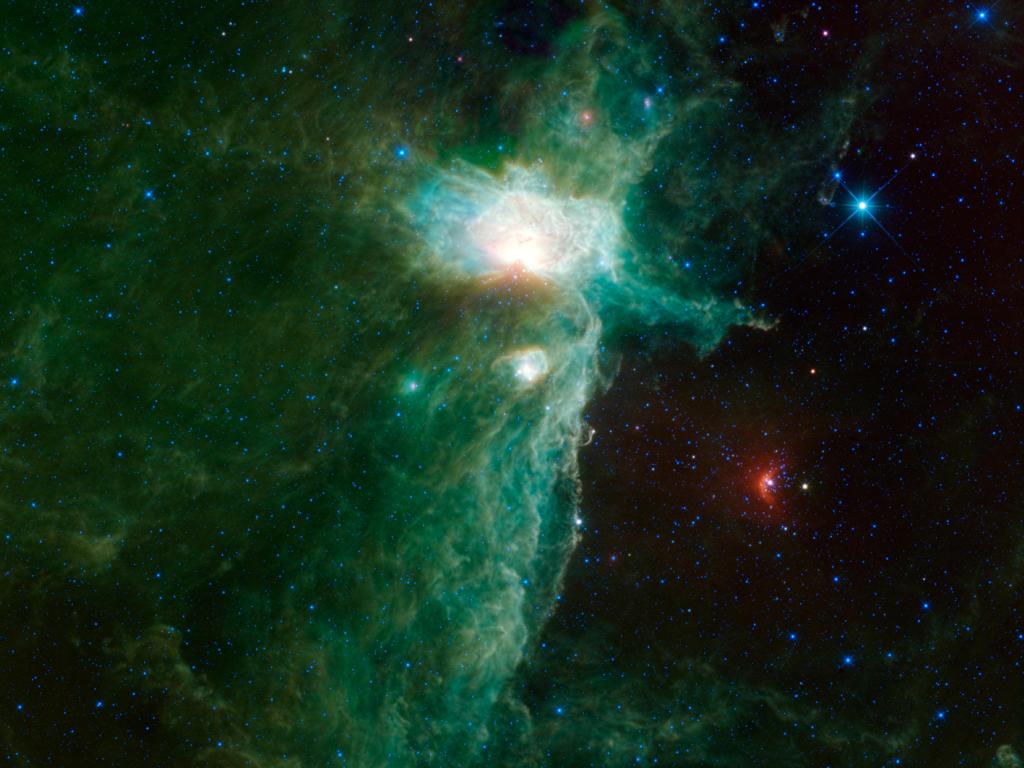
This brilliant spot of stellar dust and gas sits on the eastern hip of Orion The Hunter, a constellation visible in most of the world from November to February each year. This dusty spot in Orion is known as the Flame Nebula, a birthplace for new stars. A star 20 times the mass of the sun lights up the Flame Nebula from the inside, though the gas and dust surrounding it dim its light to our eyes by a factor of 4 billion.
Whirlpool of Stars
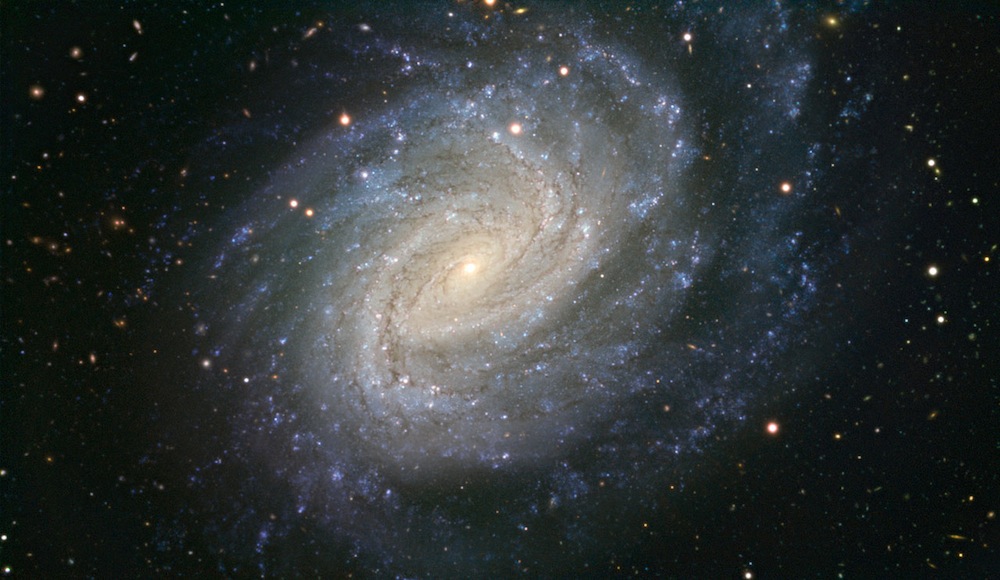
A new photograph of the galaxy NGC 1187 highlights a spiral shape much like that of our own home galaxy, only 60 million light-years away. Old stars, gas and dust glow yellow at the galaxy's center, while new stars are born in the blue regions of the galaxy's arms.
Stars die here, too. Astronomers have spotted two supernovas, or explosions caused by the death of a star or white dwarf, in NGC 1187. The second, dubbed SN 2007Y for the year it was first spotted, can be seen as a bright spot near the bottom of this image.
Approaching the Red Planet
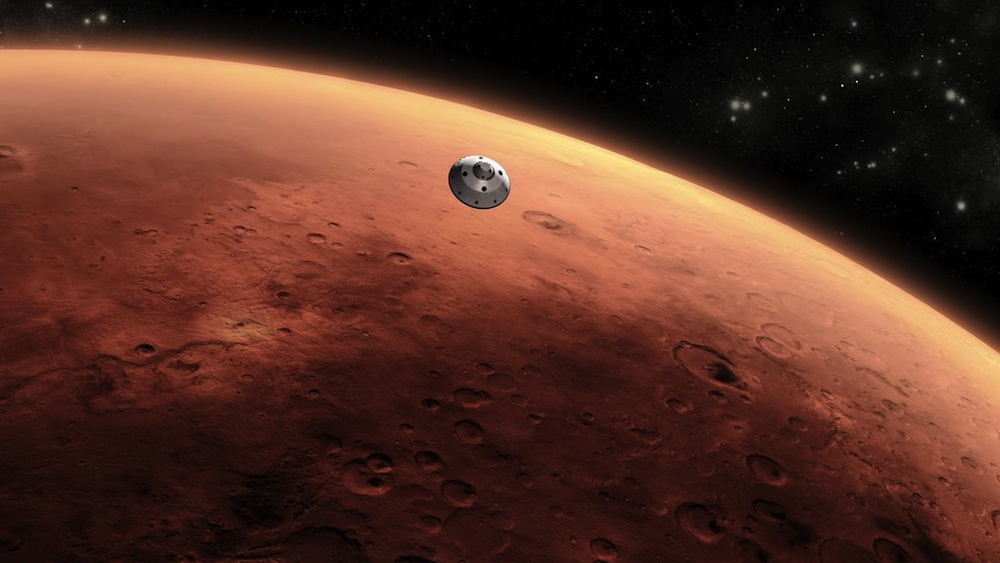
A Martian flying saucer? No, this one is all ours. This is an artist's conception of NASA's Mars Science Laboratory spacecraft nearing Mars, the new rover Curiosity inside. This historic landing is set for Sunday, Aug. 5.
On that day, years of preparation will culminate in what scientists call "7 minutes of terror" on Sunday. That's the amount of time it takes the rover-carrying spacecraft to get from the top of Mars' atmosphere to its surface. But because it takes 14 minutes for the signal from the spacecraft to reach Earth, by the time NASA scientists hear that the spacecraft has hit the atmosphere, it's actually been on the surface for 7 minutes. Until those 7 minutes pass, no one will know whether the rover made it down safely.
The Curiosity rover's mission is to study Mars' climate and geology, as well as to gather information for a potential manned mission to Earth's neighboring planet.
Rover's First Look at Mars
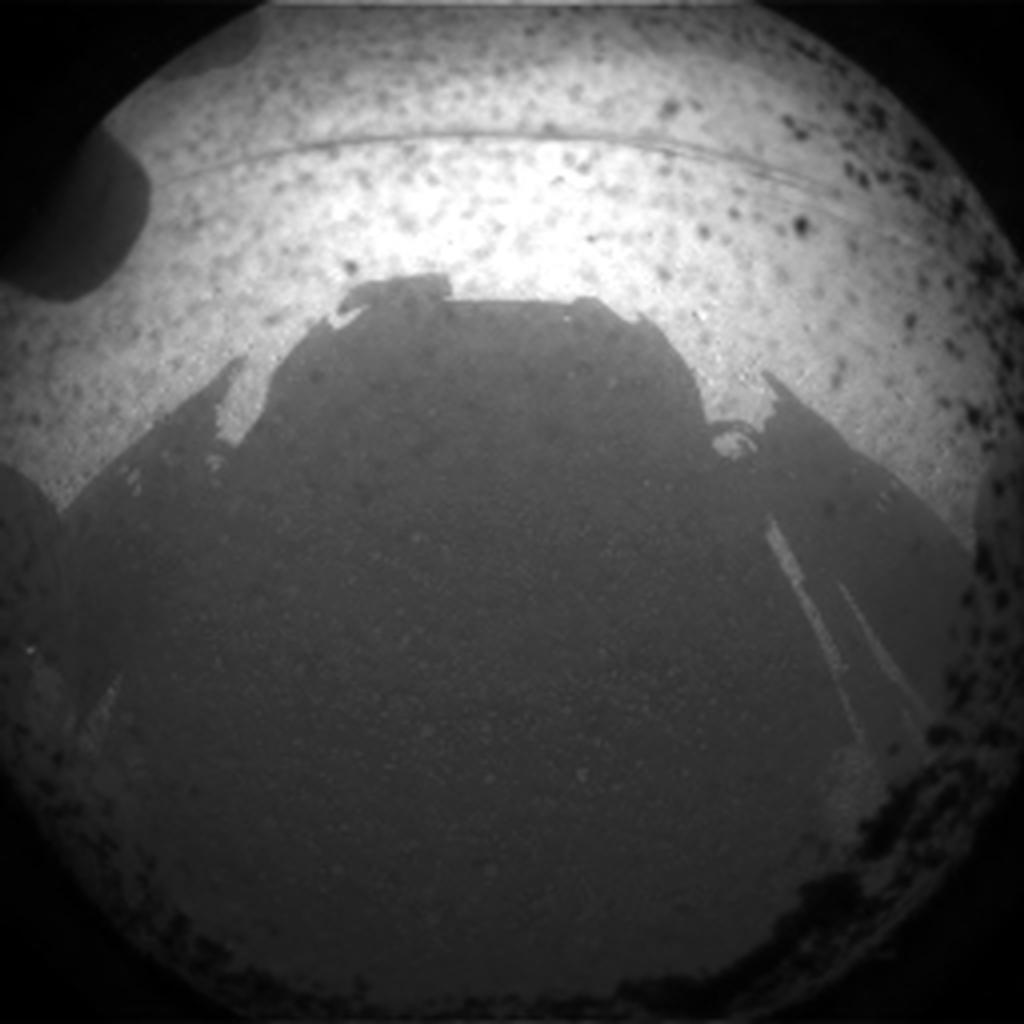
NASA's newest Mars rover is already hard at work on an alien planet after a successful landing in the early morning of Aug. 6 Eastern Daylight Time. This is the first image taken by the car-sized rover Curiosity. The rover snapped this shot of its own shadow with one of its front left Hazard-Avoidance cameras.
This image is at one-quarter of full resolution. Curiosity is set to start sending back high-resolution and color images later this week.
Cosmic Spirograph

Bizarre and mysterious textures mark the planetary nebula IC 418, also known as the spirograph nebula. This nebula (which has nothing to do with planets at all and is in fact one of the last gasps of a dying star) is about 2,000 light-years away from Earth in the constellation Lepus.
Dazzling Diamond Collision
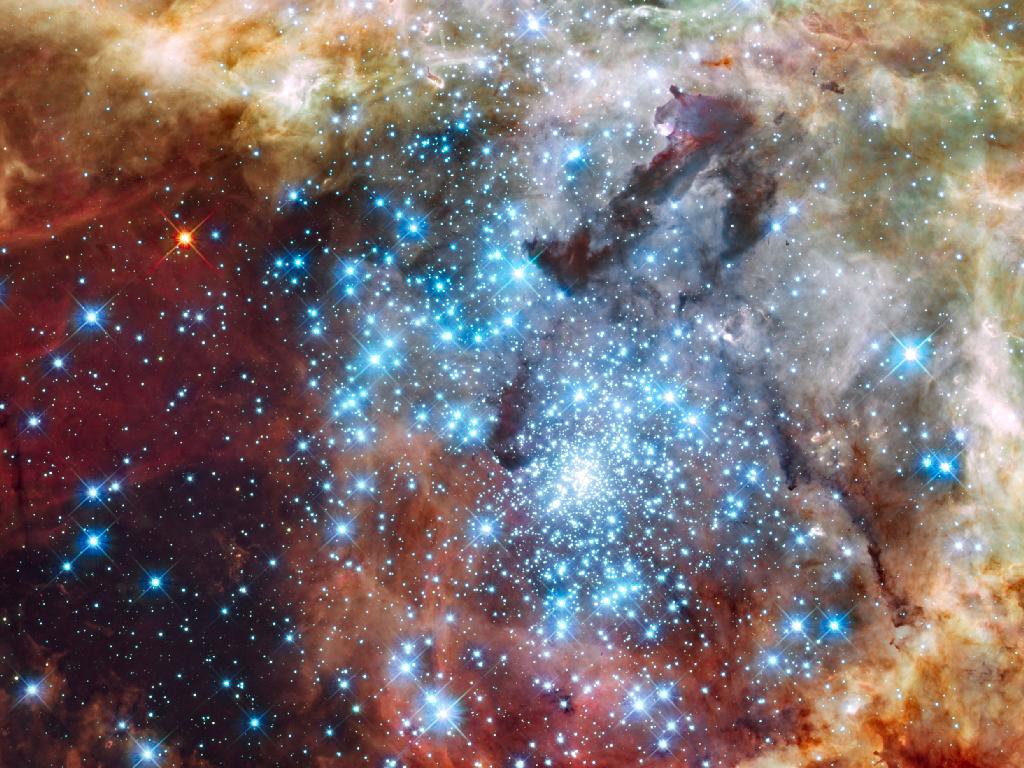
Hot, massive stars burn blue in this image taken by NASA's Hubble Space Telescope. This glittering scene comes from the heart of the 30 Doradus Nebula 170,000 light-years from Earth. Originally, astronomers believed that there was one star cluster in the nebula, but recent data from Hubble reveals that there are actually two. One of the clusters is about a million years older than the other, and they appear to be merging.
Fiery Rose
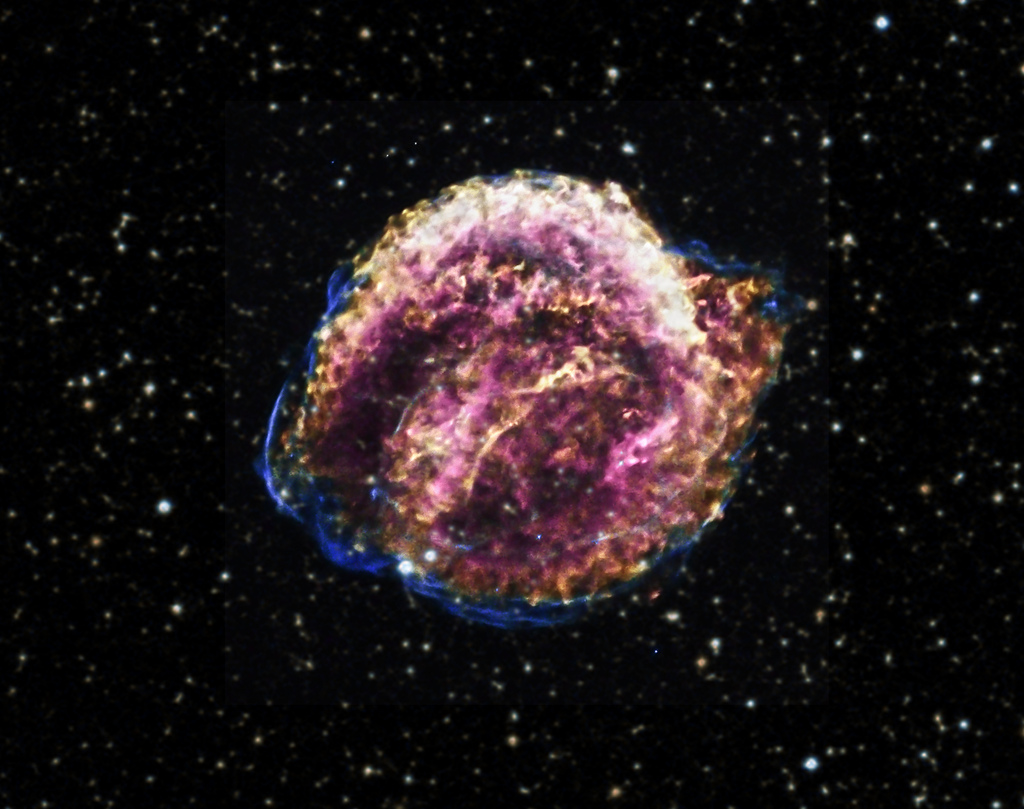
In 1604, light from the Kepler supernova reached Earth, eclipsing the brightness of Jupiter and catching the eye of astronomers like the supernova's namesake Johannes Kepler. Now, high-tech instruments allow NASA to get a close look at the leftovers of this stellar explosion, seen here. They've found that the supernova may be farther from Earth than previously suspected, pegging the distance at between 16,000 and 20,000 light years instead of 13,000. A large amount of iron in the remnant suggests that the Kepler supernova was more energetic than other explosions of its class. Researchers reported the results Sept. 1 in The Astrophysical Journal.
Up Close on Mars
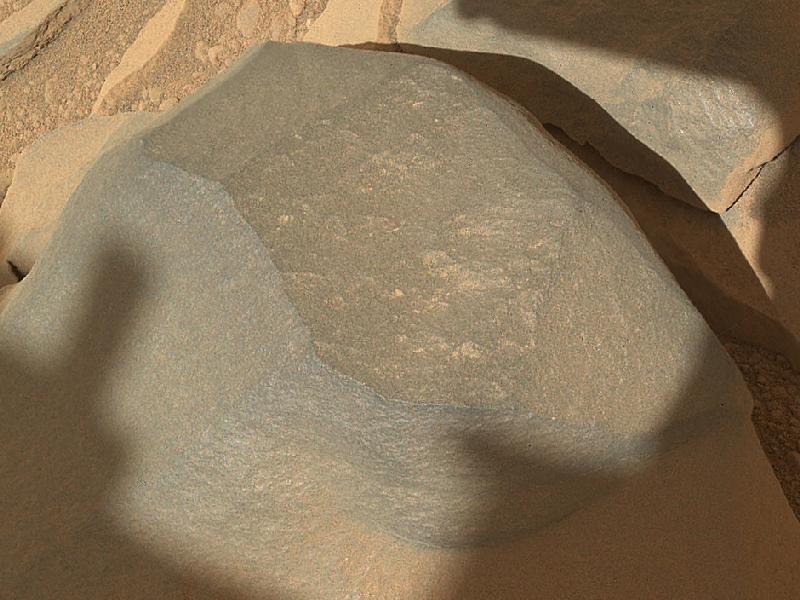
This amazingly detailed image from the surface of Mars comes from NASA's newest rover, Curiosity. Using an instrument called the Mars Hand Lens Imager, Curiosity snapped eight photographs of this 6.5 inch by 5 inch (16 by 12 centimeter) rock from about 10.5 inches (27 cm) away.
The rock, dubbed "Bathurst Inlet," is so fine-grained that the Imager cannot see individual grains. A few grains of sand and dust rest on top of the rock, but it is much cleaner than the dusty substrate around it.
Eye in the Sky

Ever feel like you're being watched? As seen by NASA's Spitzer Space Telescope, the Helix Nebula appears to peer out from space in the shape of a giant eye. This dying star is 650 light years from Earth in the constellation Aquarius. Once, the Helix Nebula was a star not unlike our own sun. As they die, these stars release their outer gas layers, leaving behind a dense core barely visible as a white dot of light in the center of the nebula. This core is called a white dwarf.
The brilliant purple at the center of this stellar "eye" is the ultraviolet and infared glow of dust surrounding the white dwarf. This dust is the remnants of outer planets and comets that might have once orbited this star. In 5 billion years or so, our solar system will face a similar fate.
Crazy Cat's Eye
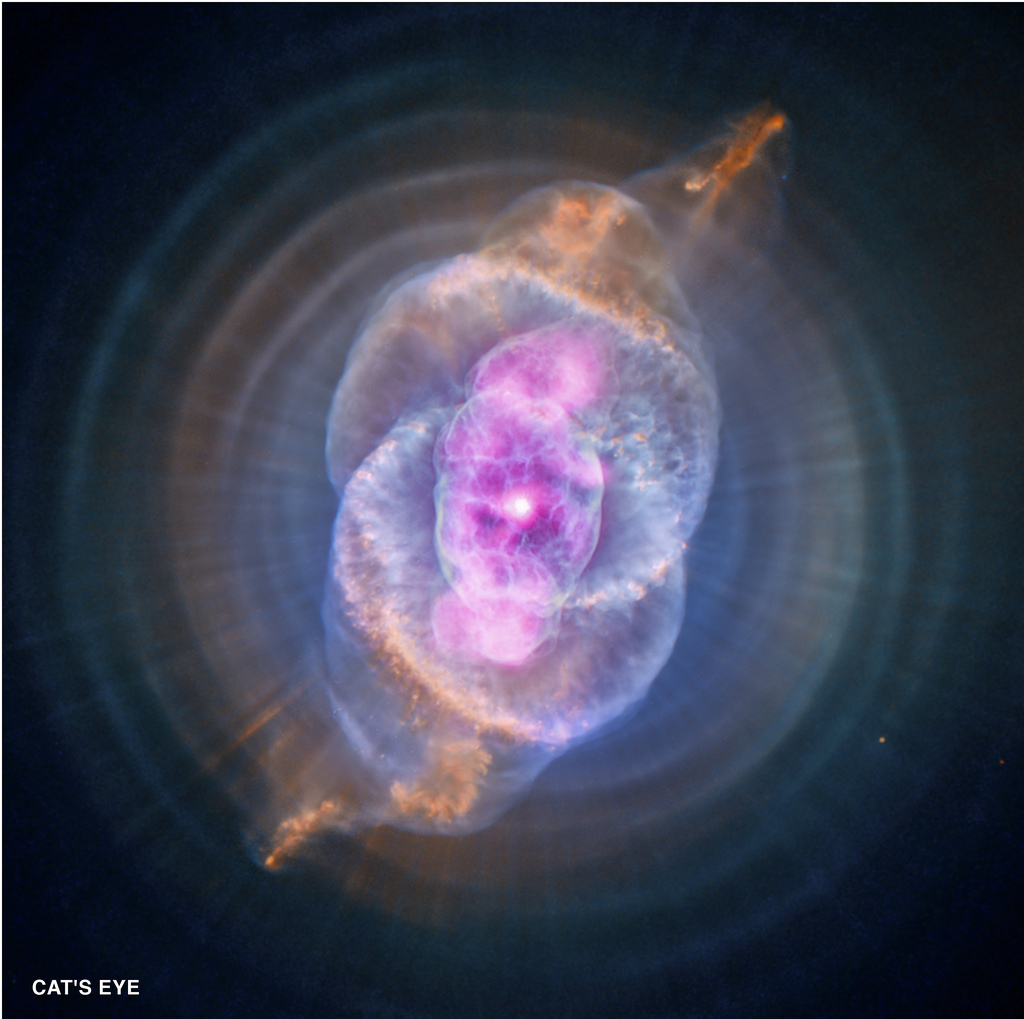
NASA's Chandra X-Ray Observatory captures the stunning Cat's Eye Nebula in vivid pink. The nebula, also known as NGC 6543, is in the constellation Draco and was first discovered in 1786.
This image is part of a recent study published August 2012 in The Astronomical Journal examining 21 planetary nebulas within 5000 light-years of our own planet. Despite their name, planetary nebulas are not planets, but dying stars that have used up their hydrogen cores and expanded. Our own sun will become a planetary nebula in several billion years.
Catch a Falling Star

Go ahead, wish upon a shooting star — you have plenty to choose from. This is a composite image of meteors from 2009 to 2011, including the Orionid, Perseid and Geminid showers. This past weekend (Oct 21 and 22) the 2012 Orionids wowed stargazers.
Our Violent Sun
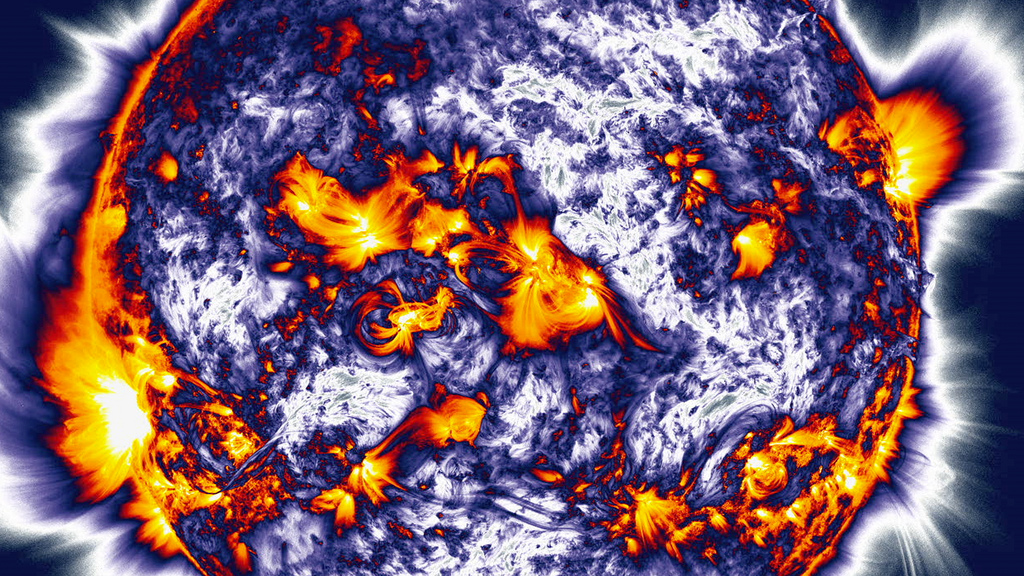
Rendered with a filter to make loops of solar material stand out, this image of the sun blurs the line between art and science. Coronal loops, eruptions of solar material that arc along the sun's magnetic fields, can be tough to study against the background of our active sun. Using a gradient filter, researchers can make these loops pop — and create a memorable image of the surface of our nearest star.
Tracking a Storm on Saturn
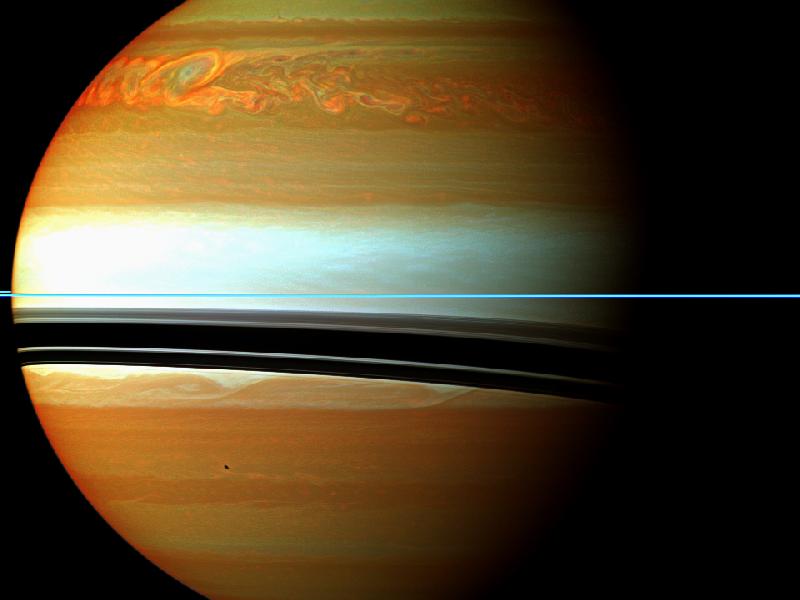
The track of a rare enormous storm on Saturn is visible along the upper portion of the planet in this image from NASA's Cassini mission. The storm occurred in 2010 and 2011 and broke records in disturbing the high atmosphere of Saturn's northern hemisphere. Even after the weather calmed, measurements by infrared sensors showed that the stratosphere had still not settled.
Orange Cluster

The star cluster Cygnus OB2 contains more than a thousand young stars, according to observations by NASA's Chandra X-ray Observatory. Chandra has observed more than 1,700 sources of X-ray emissions in this star cluster, with about 1,450 of those thought to be baby stars. Here, the x-ray emissions are visible in blue. Red in the image comes from infrared data collected by NASA's Spitzer Telescope, and the orange clouds are optical data from the Isaac Newton Telescope. [The 10 Best 3D Cameras]
Private Solar Eclipse
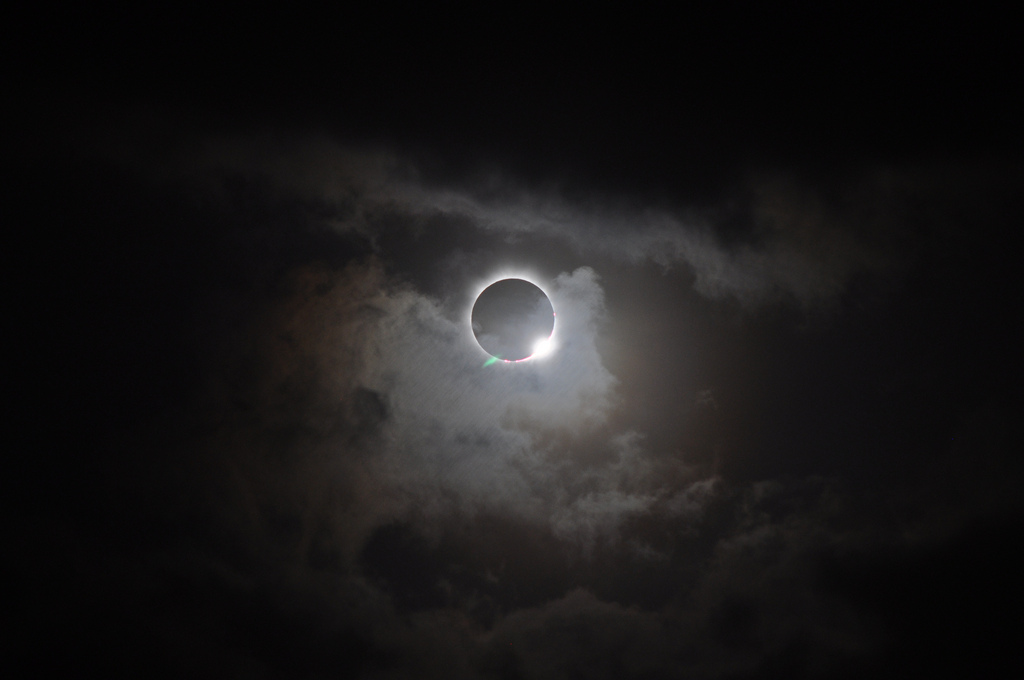
Only a lucky few saw this total solar eclipse on Nov. 13, 2012. The eclipse was only visible in a narrow band of the southern hemisphere, mainly over the ocean. In northern Australia, though, a narrow tip of land got a good view. One photographer there snapped this shot, showing the sun's corona, or atmosphere, silhouetted around the edges of the star.
Stunning Storm Swirls on Saturn

A stunning image snapped by NASA's Cassini probe orbiting Saturn reveals a raging storm swirling at the ringed planet's north pole. Located in a bizarre hexagonal cloud vortex first eyed by the Voyage spacecraft in the early 1980s, the six-sided phenomenon is likely the result of a path of a jet stream flowing through the planet's atmosphere.
"These phenomena mimic what Cassini found at Saturn's south pole a number of years ago," Cassini scientists wrote in an online update.
The image was snapped Nov. 27, 2012, and received on Earth the same day, though it has yet to be validated or calibrated, according to NASA.
Launched in 1997 and arriving on the planet in July 2004, Cassini is the first spacecraft to orbit Saturn. The probe has logged more than 3.8 billion miles (6.1 billion kilometers), along the way making major discoveries about the Saturn system, including finding the presence of hydrocarbon lakes on its moon Titan and spewing water geysers on the moon Enceladus.
Cosmic Glow Ball

Look into my crystal ball … actually, this image is of the aurora, the northern or southern lights that dance in the sky at high attitudes when charged particles from the sun interact with our planet's magnetic field. For the first time, researchers have created "hyperspectral" images of auroras. These images allow researchers to look at individual wavelengths of light rather than the whole spectrum mashed together.
Three bands, or portions of the spectrum, were used to create the ghostly image above. Breaking down the northern lights in this way allows researchers to see subtle atmospheric changes. Already, the researchers report Nov. 29, 2012 in the journal Optics Express, the technique may have revealed a strange phenomenon called airglow, in which Earth's atmosphere emits its own light through electromagnetic or chemical reactions. If the finding holds, it will be the first known observatio of airglow associated with an aurora.
Forced Perspective
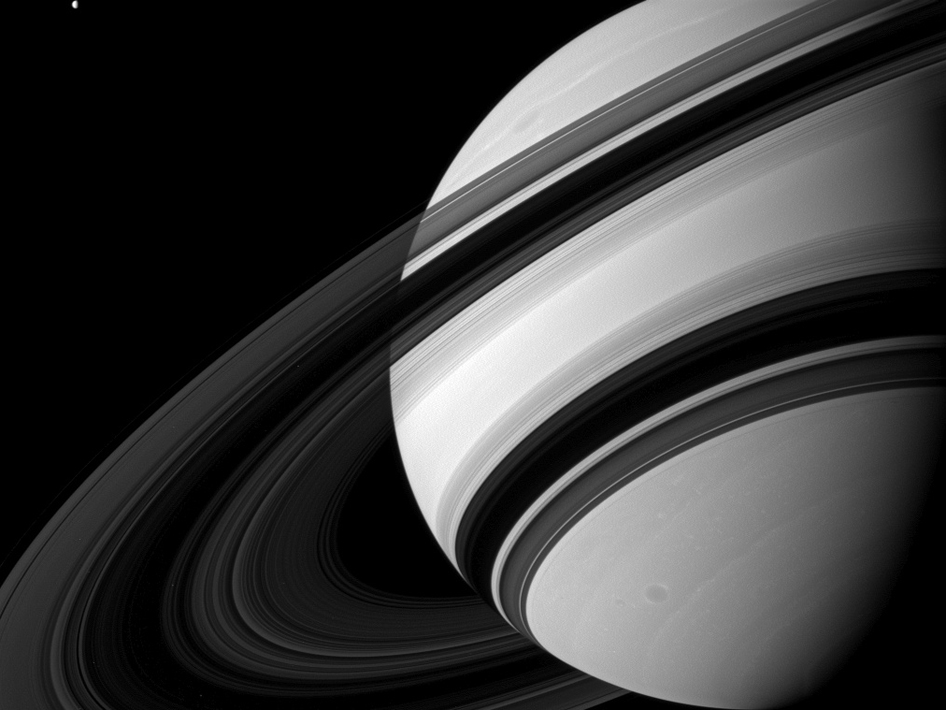
See that teeny-tiny white dot up in the left-hand corner of this image? Insignificant space dust, right?
Not quite. That little speck is Tethys, one of Saturn's moons. The moon is 660 miles across (1,602 km), but with Saturn in the foreground, it doesn't show its size. The Cassini spacecraft took this image in August 2012 from about 18 degrees below the plane of Saturn's rings.
Sun-splosion

This visualization shows a coronal mass ejection approaching Venus. Coronal mass ejections are eruptions of solar winds and magnetic fields from the sun into space; they happen every few days to a couple times a day, depending on how active the sun is. Interactions of these "CMEs" with Earth's atmosphere can cause extra-strong auroras, or northern (and southern) lights. [See dazzling aurora images]
CMEs and other solar activity are currently in the news because some believers in the so-called Mayan Apocalypse think that sun activity is set to destroy or damage Earth on Dec. 21. In fact, according to NASA, the sun is showing no signs of unusual activity.
Last Men on the Moon

Forty years ago, in December 1972, three men stood on the moon as part of the Apollo 17 mission. Since them, no one else has walked on the moon's surface. Here, astronaut Harrison Schmitt, the only geologist to ever visit the moon, stands next to the American flag with Earth visible in the sky above. The Apollo 17 mission returned 243.6 pounds (110.5 kilograms) of rock samples to Earth.
A Star is Born
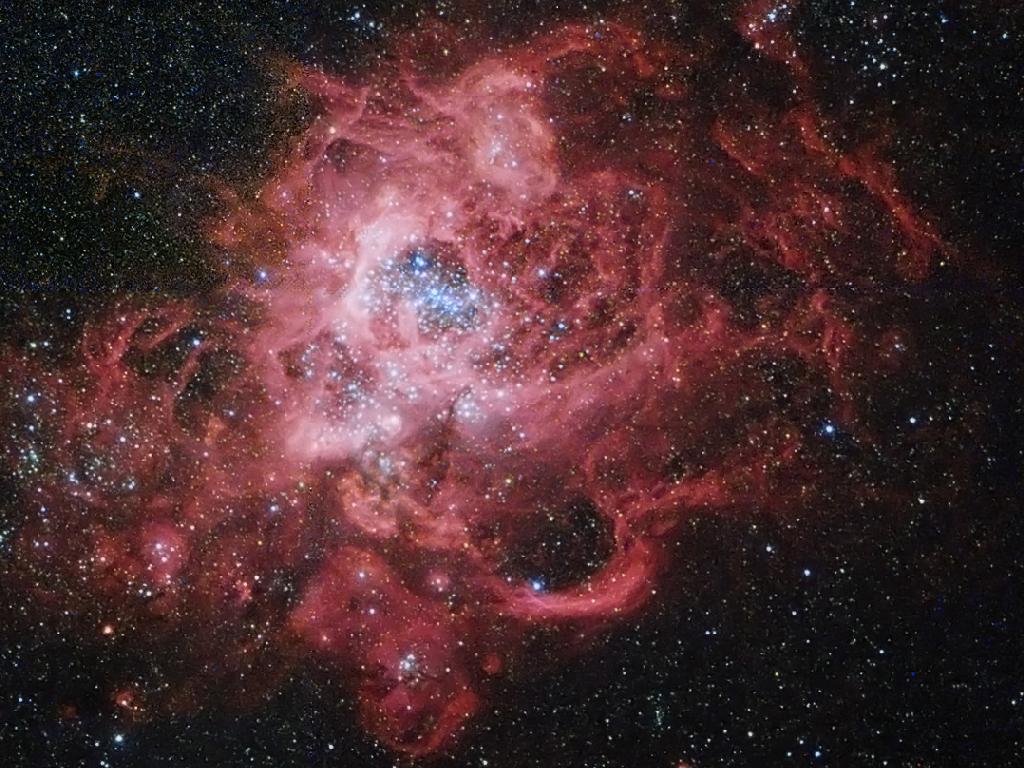
Actually, make that "Many stars are born." This is a stellar nursery in M33, also known as the Triangulum Galaxy, so dubbed because it is in the constellation of Triangulum 3 million light years away. Millions of years ago, a gas cloud began coalescing into new stars, many of which are visible in this Hubble Space Telescope image. The red mist is the remains of the original gas cloud.
Shiny, Shiny Space

What do you see in this gaseous nebula? A shiny holiday ornament or a yelling face? Or perhaps something else?
The Hubble Space Telescope captured this image of NGC 5189. Despite the "planetary nebula" moniker, this gas cloud comes not from a planet, but from a star. A planetary nebula is the final stage of life of medium-sized stars. As the star consumes the last of its fuel, it expels its outer envelope, which becomes heated, creating the glowing gas clouds seen here.
The Heart of a Galaxy
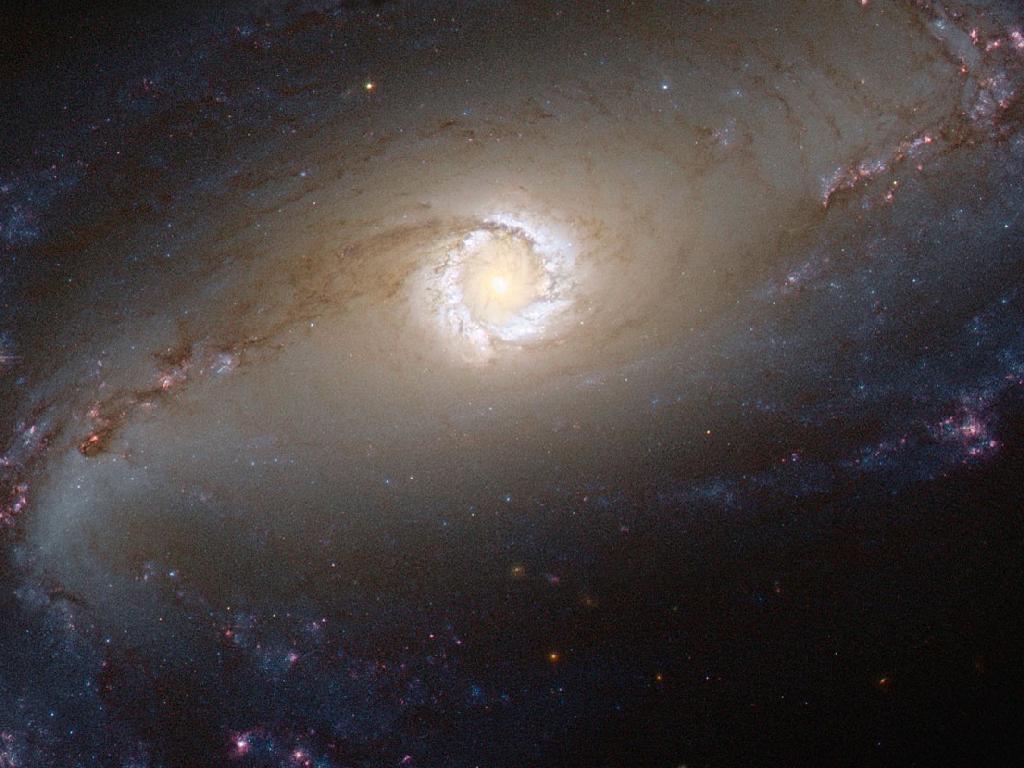
A brilliant star-forming region rings the center of NGC 1097, a barred spiral galaxy 45 million light-years from Earth. The Hubble Space Telescope captured this bright and shining image, which shows the spiral arms of the galaxy as dim compared to its radiant center. At the center of NGC 1097 is an enormous black hole. As the black hole pulls matter in, the ring around it acts as a factory for stars, fed by the material sucked toward the center of the galaxy. For a sense of scale, the ring is 5,000 light-years across.
Star Weather

How's the weather out there? This is a "weather map" of the brown dwarf 2MASSJ22282889-431026 (say that five times fast). Brown dwarfs are sometimes called failed stars. Like stars, they form from condensed gas, but they have less mass and can't fuse atoms and produce energy as stars do, according to NASA. That makes brown dwarfs a bit more like gas planets.
Using data from the Hubble and Spitzer space telescopes, NASA scientists created this striped image of the brown dwarf, revealing stormy layers of gases in the atmosphere. The results were presented Jan. 8 at the annual meeting of the American Astronomical Society in Long Beach, Calif.
Stunning Space

Colorful gases and brilliant stars capture the beauty of space in this Hubble image of the Large Magellanic Cloud, a satellite galaxy of the Milky Way. The star-forming region visible here is called LHA 120-N 11.
Star Struck
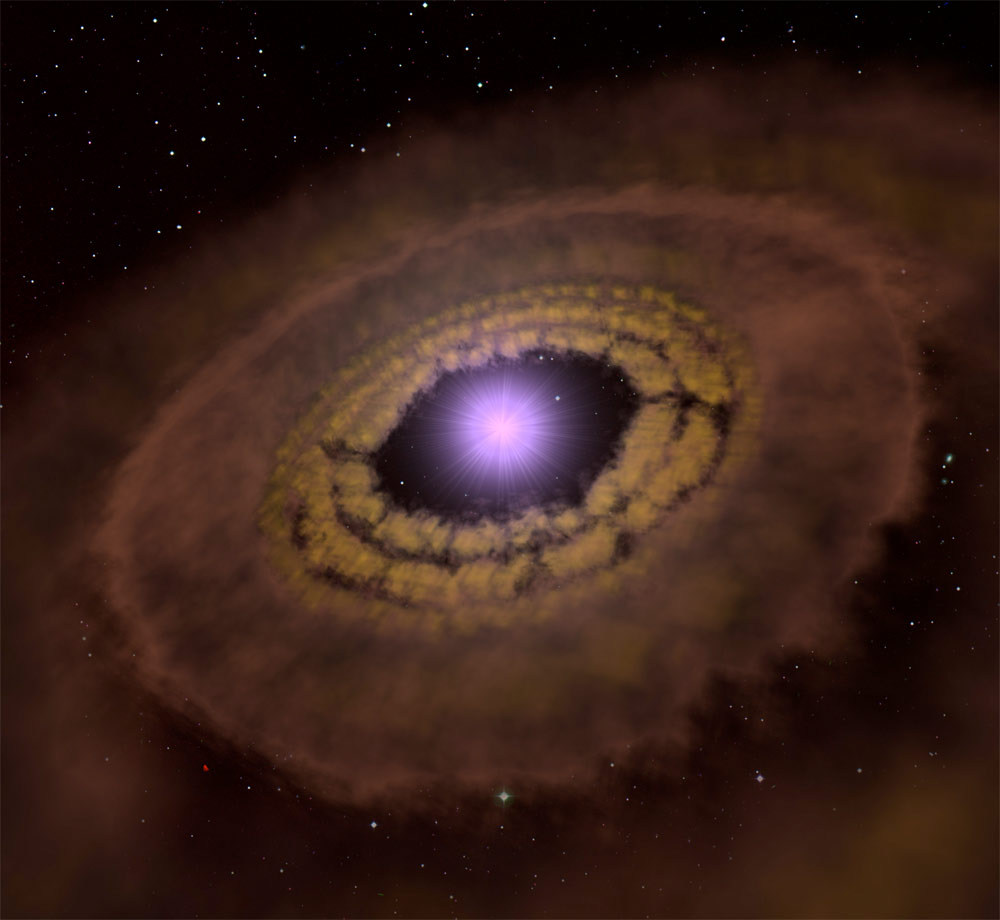
The star TW Hydrae is surrounded by its disk of gas and dust, as shown in this artist's depiction. Scientists have just found the mass of this disk, which is regarded as a prototypical example of planetary nurseries, is greater than was previously assumed. They reported the finding in the Jan. 31, 2013, issue of the journal Nature.
Using the Herschel Space Telescope, the scientists set a new lower limit for the disk's mass at 52 Jupiter masses. The finding suggests that even in a relatively old stellar system like TW Hydrae (estimated to be between 3 million and 10 million years old), there is still ample matter in the disk to form a planetary system larger than our own. TW Hydrae is just 176 light-years from Earth.
Rover's Hello

NASA's Curiosity Rover is sending postcards from Mars! This self-portrait comes courtesy the Mars Hand Lens Imager, which is attached to a robotic arm not visible in this photograph. Curiosity is hanging out on a flat rock outcrop called "John Klein" in this Feb. 3 shot. (The outcrop gets its name from a Mars Science Laboratory deputy project manager who passed away in 2011.) The John Klein outcrop is the site of the rover's first rock-drilling activities.
The Colorful Side of the Moon
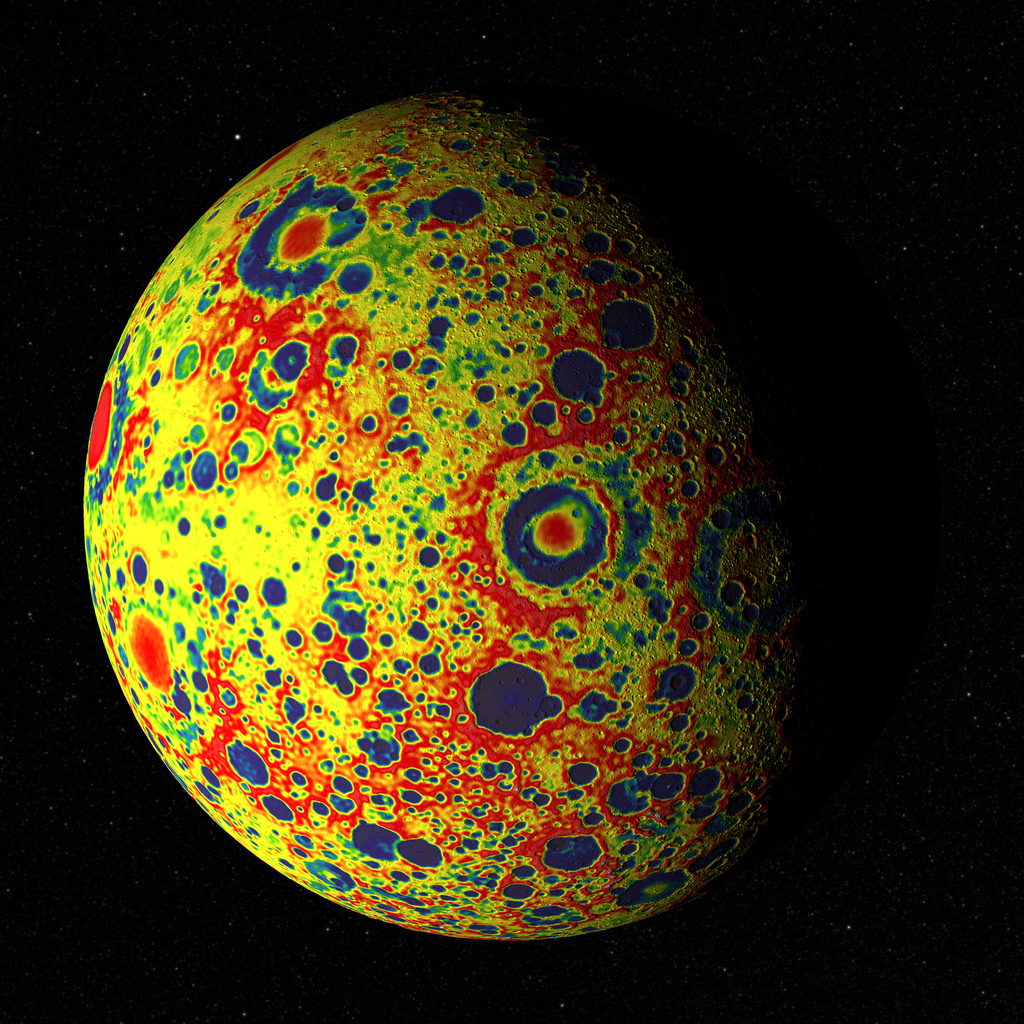
A rarely seen view of the moon appears in eye-popping color in this NASA image. This gravity map shows variations across the moon's surface caused by both surface irregularities and a lumpy interior. The red sections indicate relatively high gravity, while blue and dark purple show spots where you'd find a little extra spring in your step.
This is a view of the dark side the moon, an angle never visible from Earth. Satellites orbiting the moon do get this view, however, and can measure gravity variations from orbit.
Blue Planet
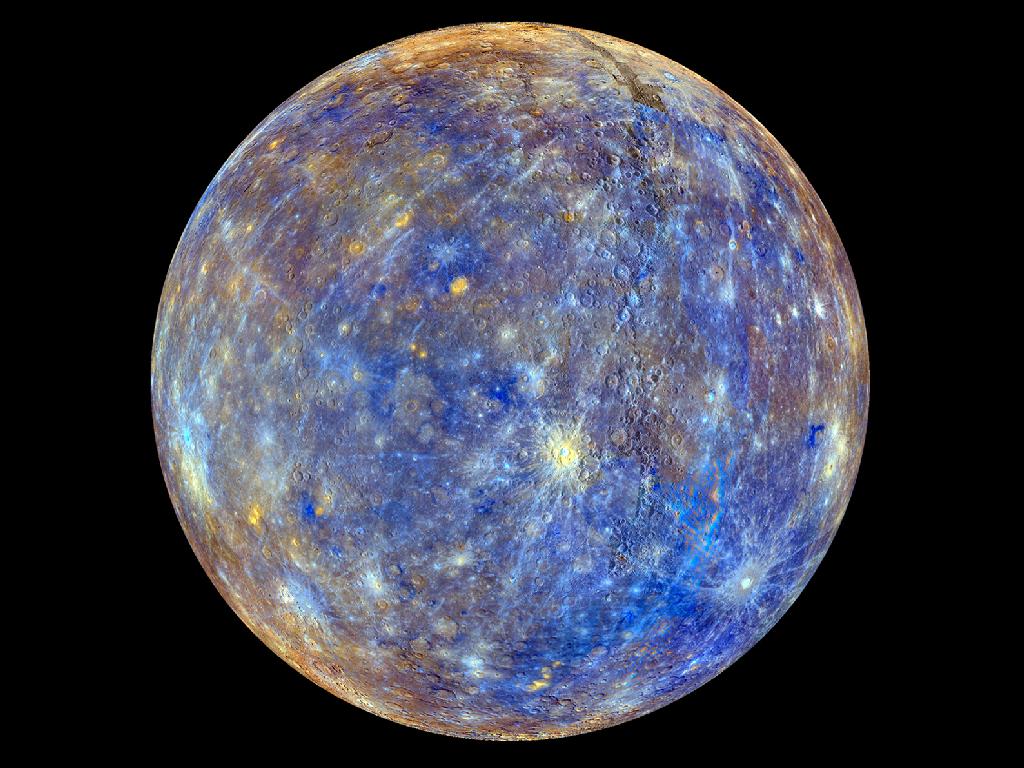
Earth is the blue planet, but here Mercury earns the moniker. The innermost planet appears in beautiful blue in this map made from images taken by the MESSENGER spacecraft. The colors represent the geology of Mercury's surface, from chemical to mineralogical to physical differences in the rocks.
Space Spirograph

The movements of NASA Fermi Gamma-ray Space Telescope appear as a graceful webbing in this image. The lines represent 51 months of movement by the instrument's Large Area Telescope, which sweeps the sky from its orbit around Earth once every three hours.
The purpose of the LAT is to capture gamma ray light from our own galaxy, as well as from objects (such as supermassive black holes) billions of light-years away, according to NASA.
Bam!

Almost too fiery to seem real, this image of the sun's surface was captured by NASA's Solar Dynamics Observatory in August 2012. Shortly afterward, this prominence on the sun's surface erupted, blasting solar particles toward Earth. According to NASA, this eruption may have been the cause of a temporary radiation belt that surrounded Earth last year. Read more about the mysterious radiation zone.
Redeye
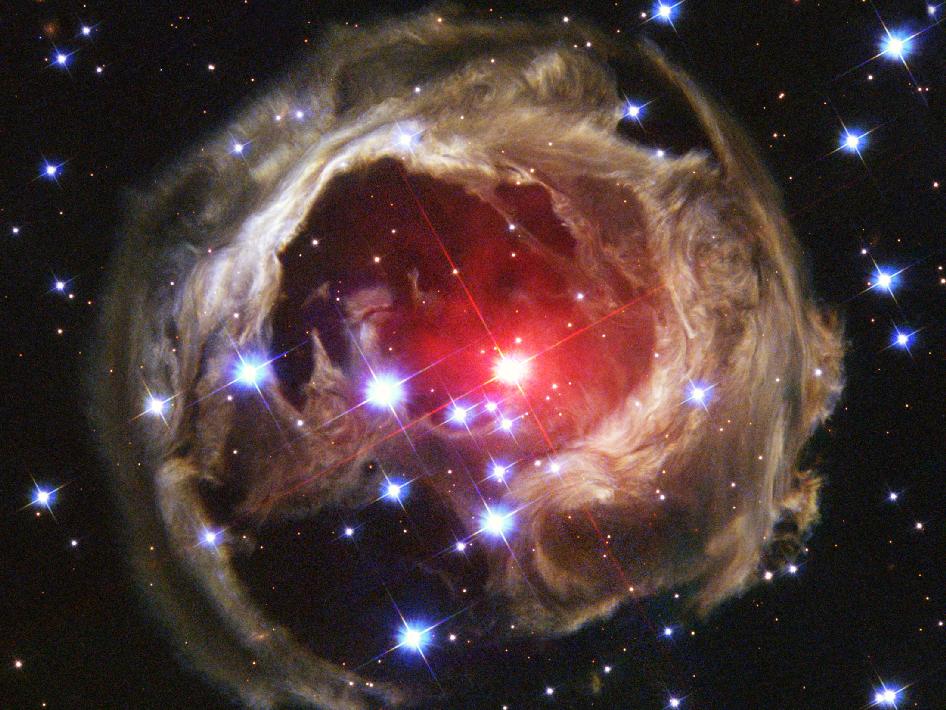
An unexpected and unexplained stellar flash echoes 20,000 light years from Earth in the constellation Monoceros (the Unicorn), looking like a peering red eye. This is V838 Mon, a star that abruptly expanded in January 2002, temporarily becoming the brightest star in the Milky Way galaxy. The stellar flash faded just as quickly as it appeared, a phenomenon never observed before. The Hubble image above shows light from the flash moving outward from the star, reflected in the interstellar dust surrounding V838 Mon.
Solar Prominence
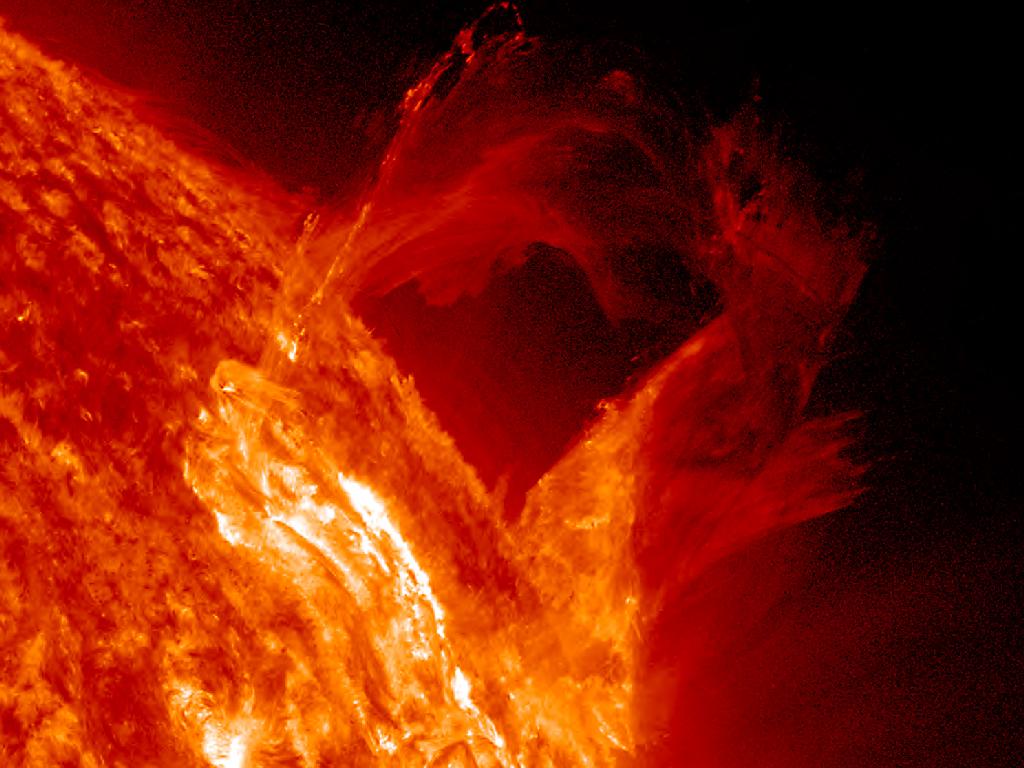
A graceful solar prominence arced out from the sun and gradually broke apart on March 16, 2013, completing this dreamy sequence in about four hours. This was a short-live prominence — the longest can last up to a year before floating apart.
Pretty in Pastels

Saturn shines like a watercolor in ultraviolet light, its rings standing out sharply against the blackness of space. This photo is part of a series of images taken in 2003 by NASA's Hubble Space Telescope, when Saturn was maximally tilted toward Earth (which happens once every 29.5 years). Ultraviolet light is best for capturing concentrations of small aerosol particles; researchers also snapped photos in infrared and visible light to catch the full spectrum of Saturn's atmosphere.
Vermilion Vortex

Around and around goes Saturn's north polar storm — as fast as 330 miles per hour (150 meters per second). This striking red photograph of the 1,250-mile-wide (2,000 kilometer) storm is a false-color image from NASA's Cassini spacecraft taken in November 2012. No one knows how long Saturn's north polar storm has been spinning, according to NASA. Saturn periodically sports "Great White Spots" thousands of kilometers wide. These white-cloud storms are sometimes visible by telescope on Earth.
Stunning Solar Flare

The sun is restless in this photograph captured May 3, 2013. The image captures a prominence eruption, a burst of solar material extending from the sun's surface. The sun is entering a period of solar maximum, when activity like this ramps up on an 11-year cycle. [See a video of the sun's daily life]
Surprise Spacewalk

Astronaut Chris Cassidy is framed by Earth and space during an unplanned May 11, 2013 spacewalk to fix a coolant leak aboard the International Space Station. Along with Tom Marshburn, Cassidy spent five and a half hours outside the ISS fixing a pump control box. The ammonia leak wasn't a danger to the crew but would have decreased the amount of power available onboard. [Read More About the Surprise Spacewalk]
Really Big Butterfly

The "wingspan" of the butterfly nebula stretches over 3 light-years. The butterfly nebula is a planetary nebula, a misleading term — in fact, this gorgeous cloud of gas and dust is the remnants of a dying star about 4,000 light-years away from Earth. Hubble captured this image of the dusty butterfly in 2009.

Stephanie Pappas is a contributing writer for Live Science, covering topics ranging from geoscience to archaeology to the human brain and behavior. She was previously a senior writer for Live Science but is now a freelancer based in Denver, Colorado, and regularly contributes to Scientific American and The Monitor, the monthly magazine of the American Psychological Association. Stephanie received a bachelor's degree in psychology from the University of South Carolina and a graduate certificate in science communication from the University of California, Santa Cruz.
